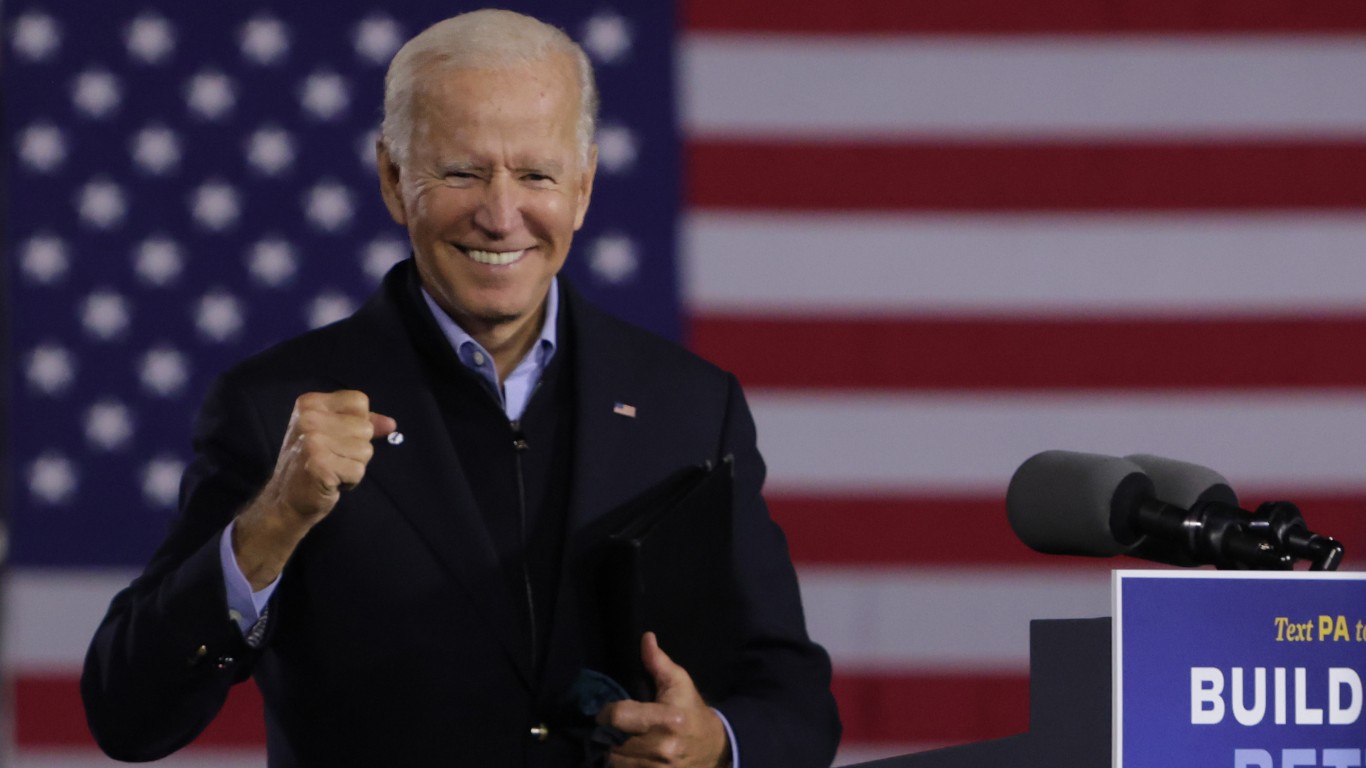
Only 45 people have ever become president of the United States. All were men; all but Barack Obama were white; and all but John F. Kennedy were Protestant. Most of them were lawyers or had a background in law. Only one of them – Grover Cleveland – served two non-consecutive terms in office, a goal the 45th president of the U.S. Donald Trump is trying to achieve. President Joe Biden confirmed his reelection bid, setting up a possible rematch with Trump next November.
There has never been one direct path to the presidency, and the nation has profited from the group of 44’s varied and diverse experiences before they became America’s commander in chief.
In recognition of the many roads taken to the nation’s highest office, 24/7 Tempo has reviewed each president’s path to the Oval Office.
Click here to see each president’s path to the Oval Office
Not all 45 set out to be president. Twelve men on this list were generals, including Dwight Eisenhower and Ulysses S. Grant, and leveraged their leadership experience and success in the military to become president. Eisenhower’s ability to delegate responsibility borne from his military experience as well as upgrading the Office of Congressional Relations helped him in his dealings with Congress. These are the most and least effective presidents, according to historians.
Of those 12 who were generals, five served in the Civil War and all were from Ohio. Some were businessmen like George W. Bush and Harry Truman. Some were engineers, like Herbert Hoover and Jimmy Carter. It would be hard to define Theodore Roosevelt, who was a cowboy, naturalist, soldier, and conservationist, among other pursuits.
What all presidents have in common is that they all had their quirks. The third president of the United States, Thomas Jefferson, for example, was very passionate about meteorology and consulted an astrologist. Here are the most surprising facts about every American president.
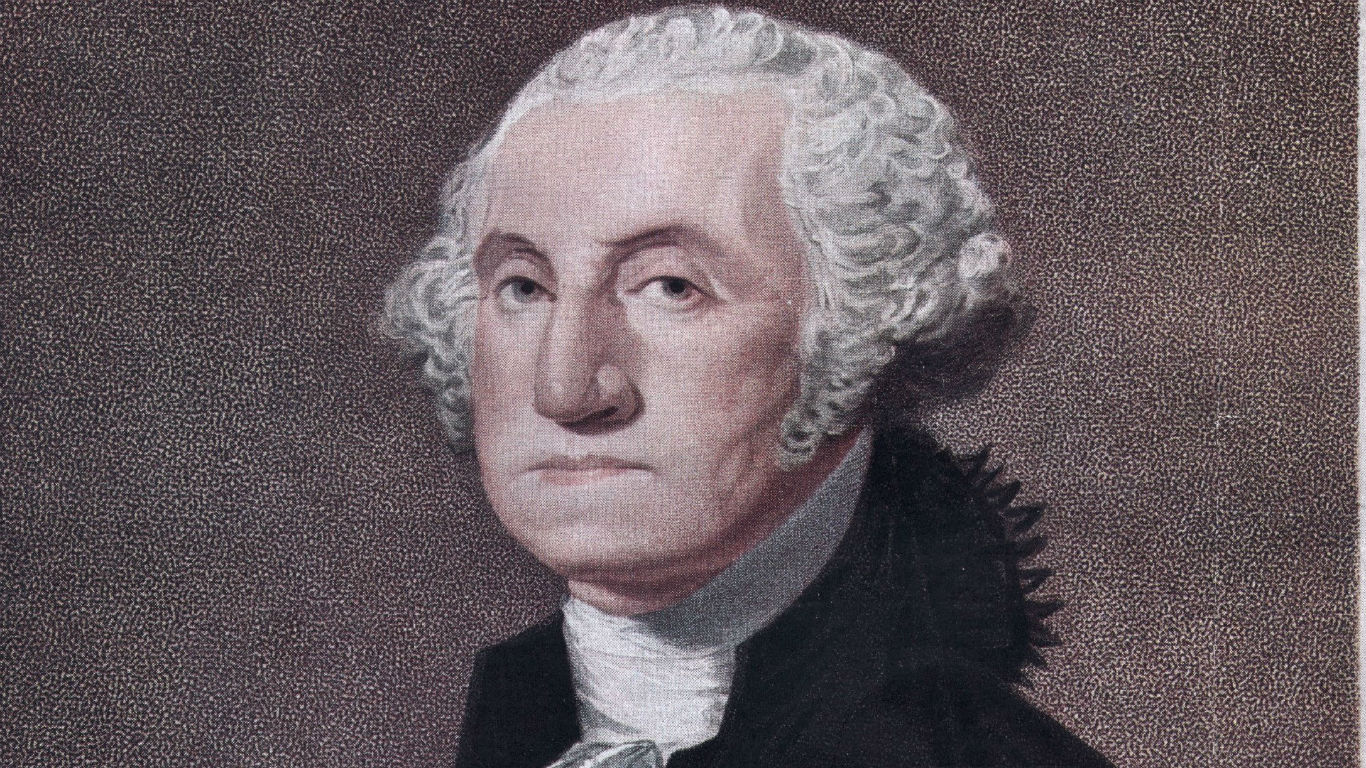
George Washington (1732-1799)
> Term: 1789-1797
> Party affiliation: None
> Notable occupation: Soldier, gentleman farmer
George Washington was the nation’s first war hero. He was unanimously elected president by the Electoral College after leading the Continental Army to victory over the British Empire. Before the American Revolution, Washington developed leadership skills during the French and Indian War.
[in-text-ad]
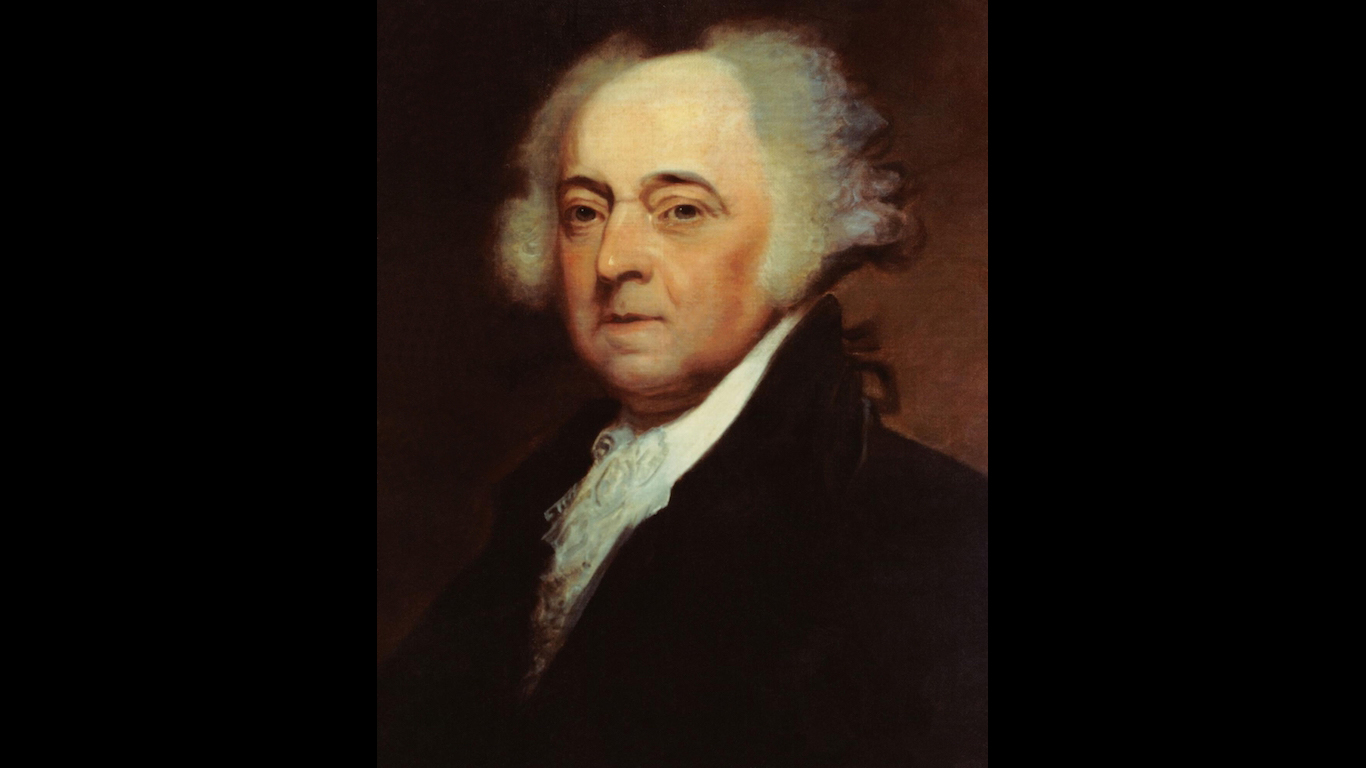
John Adams (1735-1826)
> Term: 1797-1801
> Party affiliation: Federalist
> Notable occupation: Diplomat
John Adams was well-positioned to become president. During the Revolutionary War, he served in France in a diplomatic role and helped negotiate the Treaty of Paris that ended the war. After the creation of the United States, he was ambassador to England. When he returned, he was elected vice president under Washington.
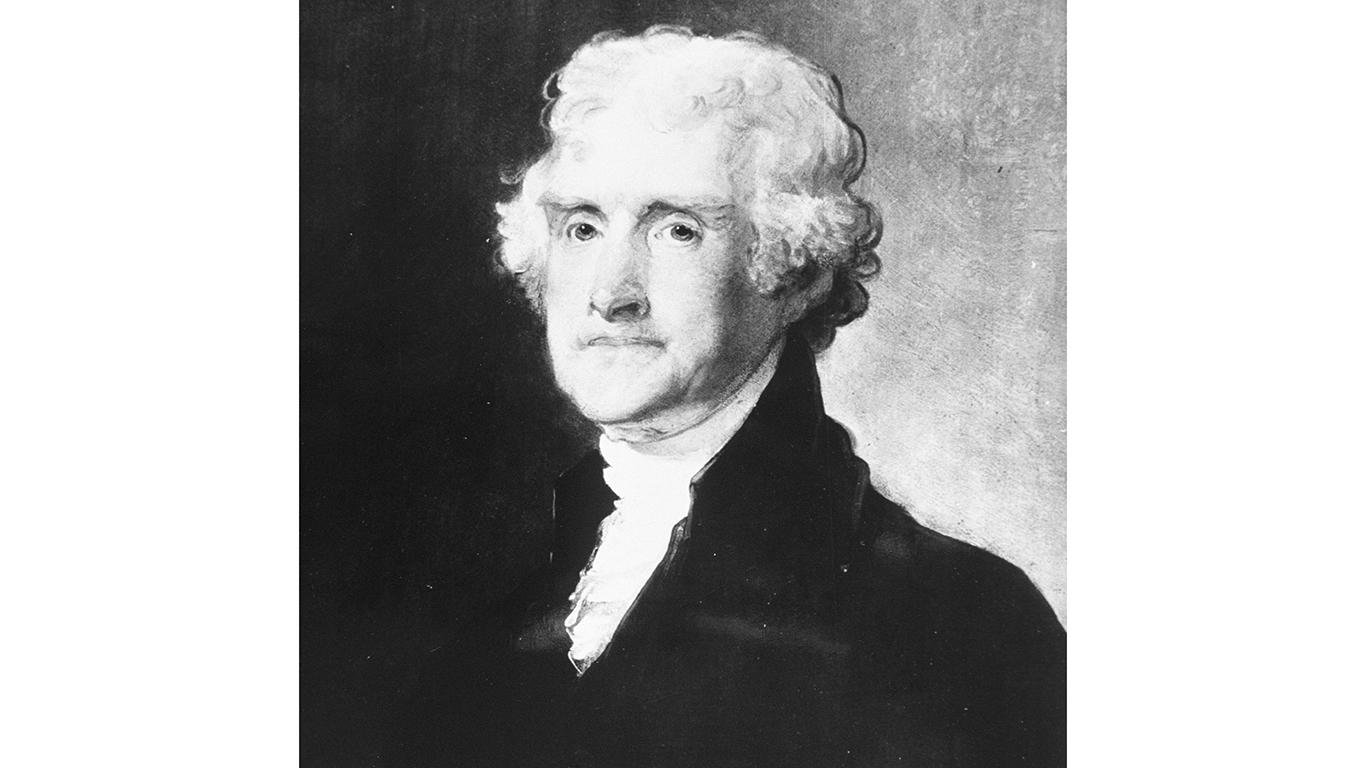
Thomas Jefferson (1743-1826)
> Term: 1801-1809
> Party affiliation: Democratic-Republican
> Notable occupation: Writer, diplomat
Thomas Jefferson began his road to the presidency in 1776, when he helped draft the Declaration of Independence. During Washington’s presidency, Jefferson was appointed secretary of state, in 1789. It was at this time that two political parties began to take shape, leading to a division in government. The Federalists, headed by Alexander Hamilton, believed in a strong central government, and the Democratic-Republicans, led by Jefferson, believed in states’ rights. Jefferson resigned as secretary of state and ran for president against John Adams and lost. Because the second-place candidate became vice president at that time, Jefferson became vice president. He was elected president in 1801.
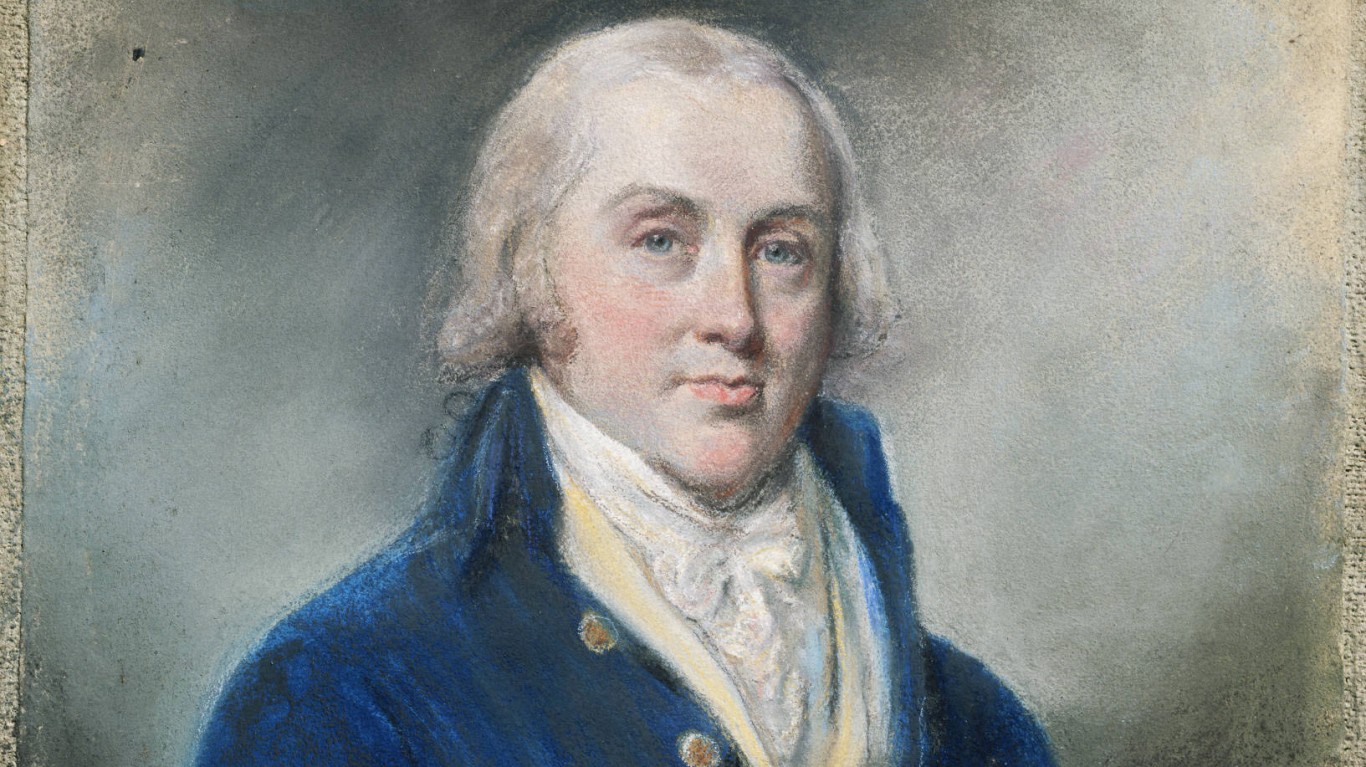
James Madison (1751-1836)
> Term: 1809-1817
> Party affiliation: Democratic-Republican
> Notable occupation: Writer, secretary of state
At 29, James Madison was the youngest member of the Continental Congress. He became known as the Father of the Constitution and was an advocate for strong central government and checks and balances. Madison was a staunch supporter of Washington’s policies while serving in the House of Representatives. He introduced and helped pass the first 10 amendments to the Constitution. Later, as secretary of state, Madison played a key role in the Louisiana Purchase.
[in-text-ad-2]
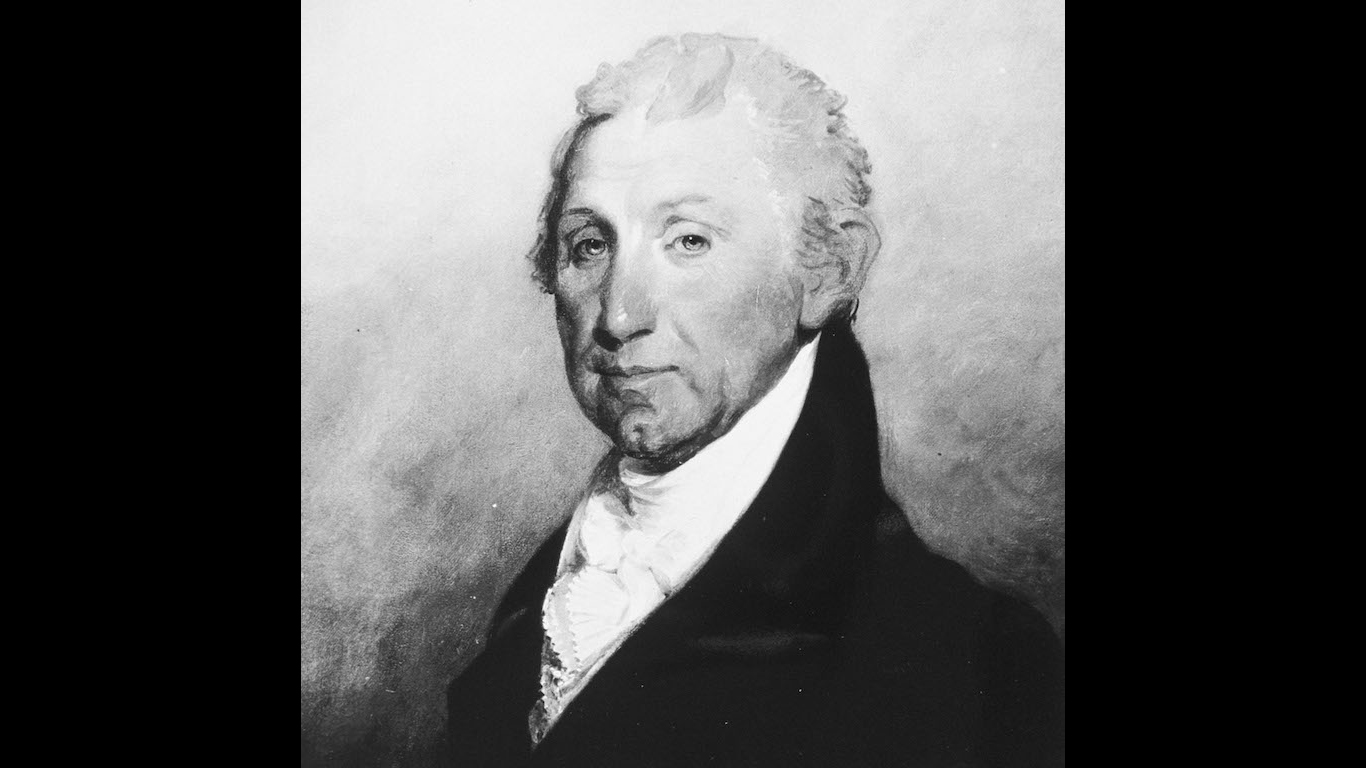
James Monroe (1758-1831)
> Term: 1817-1825
> Party affiliation: Democratic-Republican
> Notable occupation: Diplomat, governor
James Monroe served in Washington’s cabinet as minister to France. Monroe’s skills as a diplomat played a role in the Louisiana Purchase, which doubled the size of the United States. He then served as minister to the United Kingdom from 1803-1807. Monroe became such a trusted public servant who he served in two cabinet positions — secretary of state and secretary of war — at the same time, making him the first American to do so.
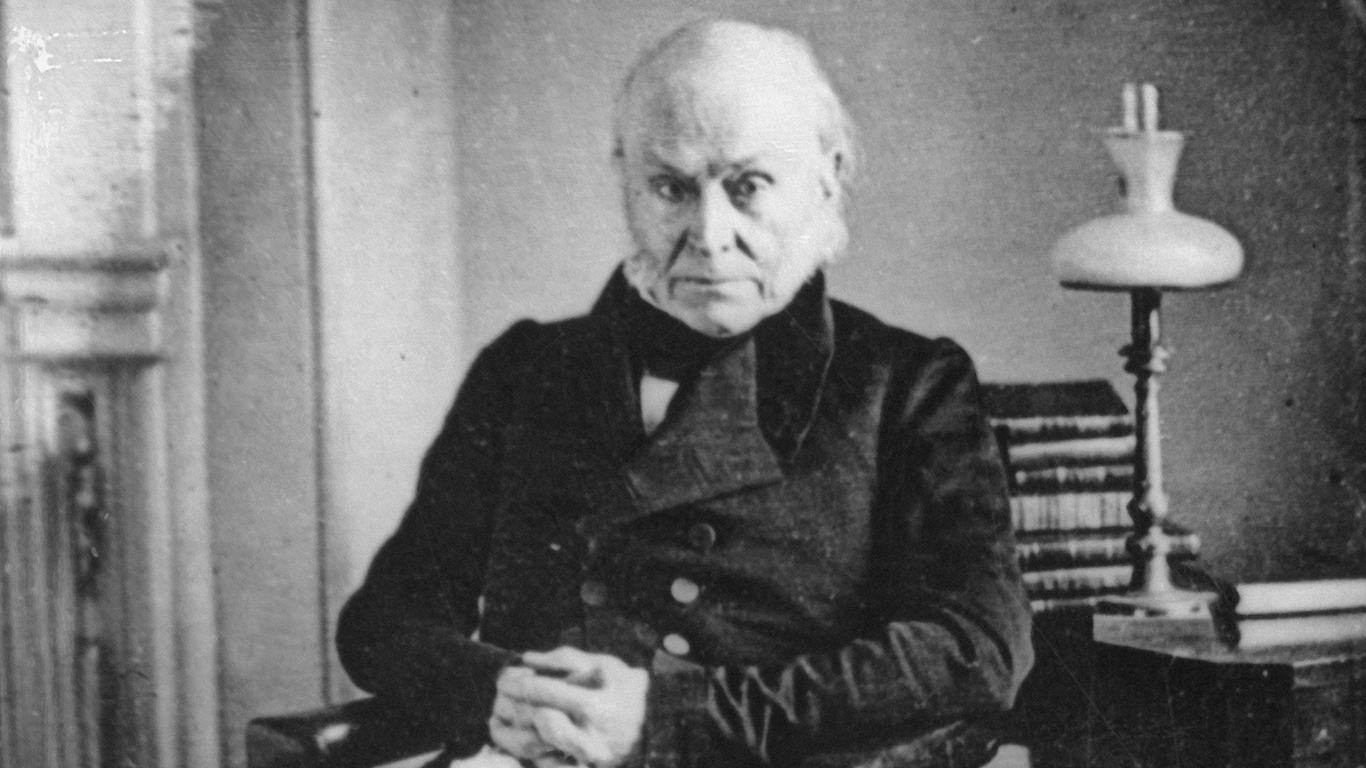
John Quincy Adams (1767-1848)
> Term: 1825-1829
> Party affiliation: Democratic-Republican
> Notable occupation: Diplomat, senator
It never hurts to be the grandson of a president, yet John Quincy Adams came to the presidency with his own set of impressive credentials. Adams had a successful diplomatic career, serving as Washington’s minister to the Netherlands. His observations about the wars ravaging Europe and the dangers of getting involved in them got the president’s attention. Adams is credited with laying the groundwork for what would become the Monroe Doctrine, the dominant American foreign policy in the Western Hemisphere for almost 200 years. It maintained that the U.S. should not involve itself in the affairs of other Western nations.
[in-text-ad]
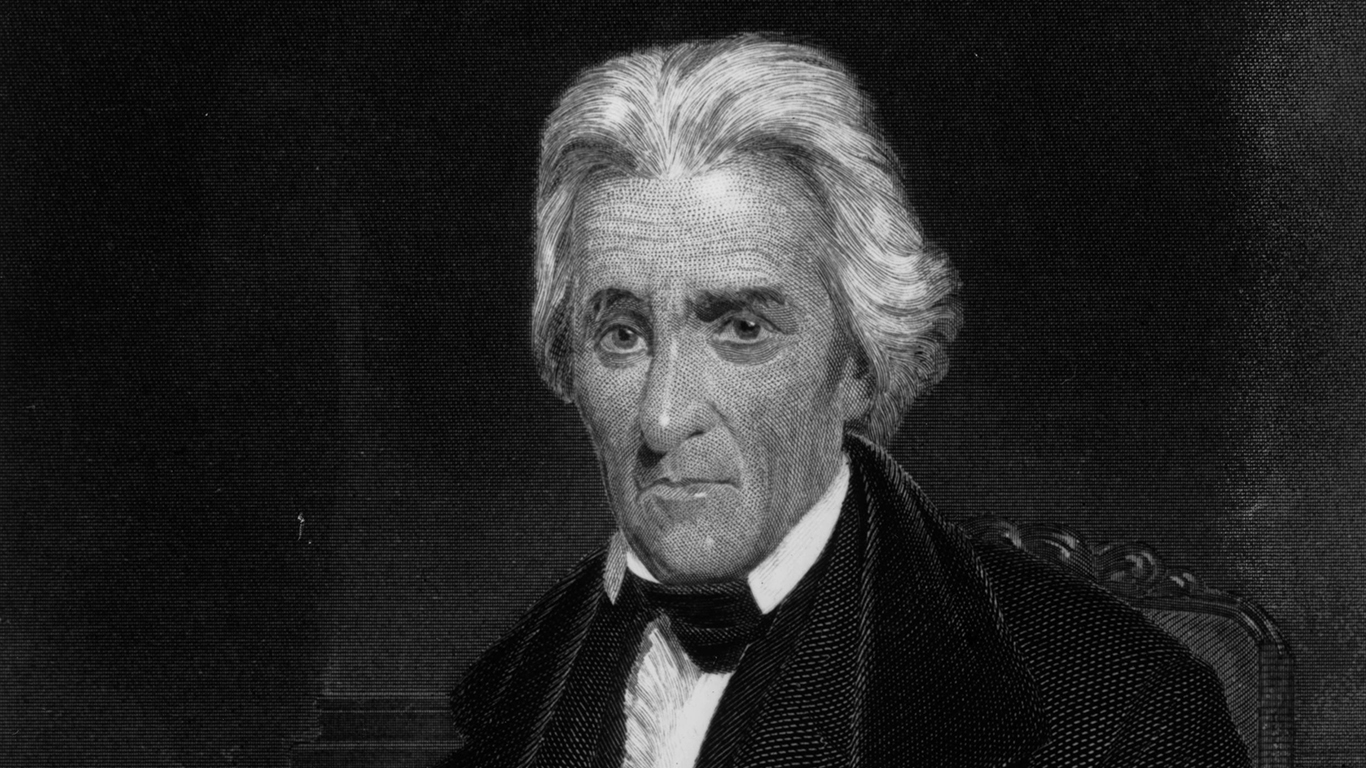
Andrew Jackson (1767-1845)
> Term: 1829-1837
> Party affiliation: Democratic-Republican
> Notable occupation: Soldier
Never one to avoid a fight, Andrew Jackson, veteran of street brawls and survivor of duels, took on Native Americans and the British in the War of 1812. He defeated Native American opposition in the South and also beat the British at New Orleans, a feat that put him in the small but growing pantheon of American military heroes.
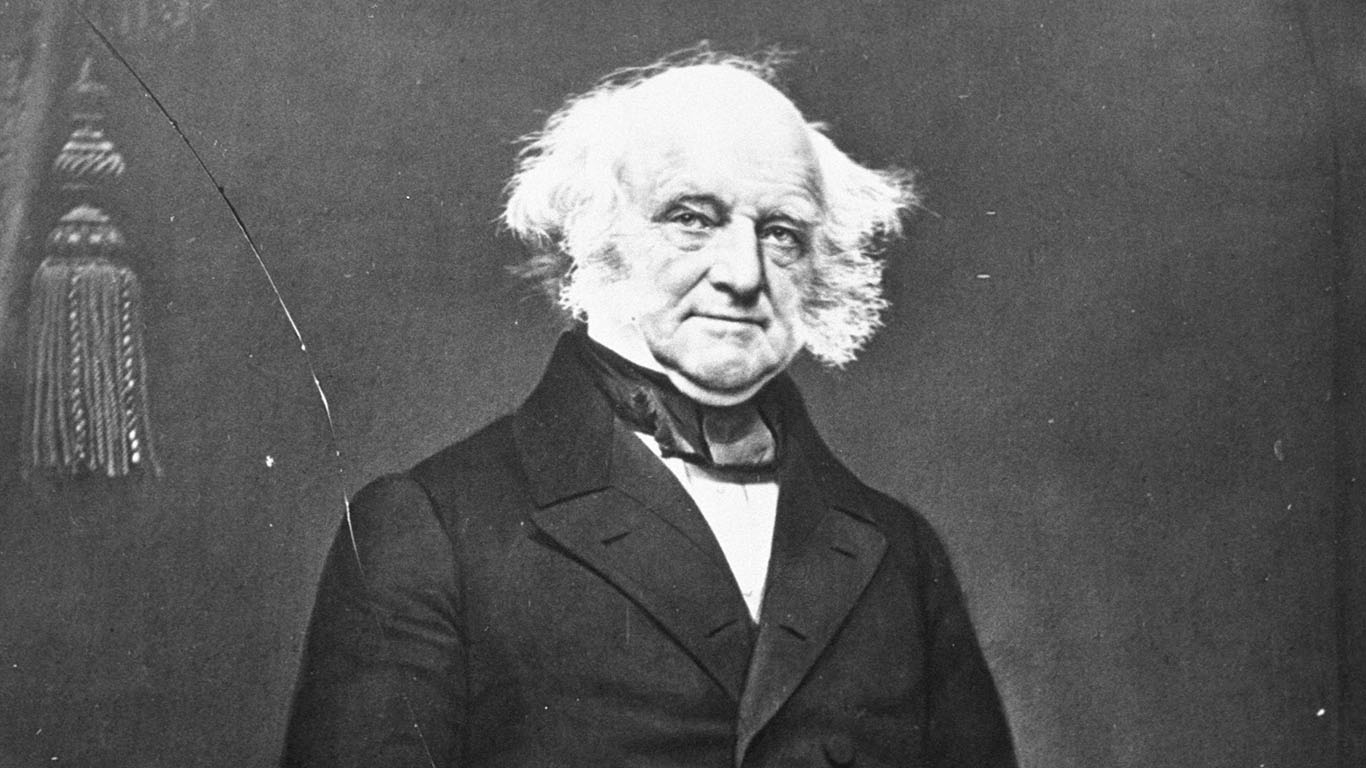
Martin Van Buren (1782-1862)
> Term: 1837-1841
> Party affiliation: Democratic
> Notable occupation: Governor, secretary of state
An impeccably dressed man and shrewd political operator, Martin Van Buren forged an alliance with the forces of Andrew Jackson, who rewarded his loyalty by naming him secretary of state. Eventually, Van Buren would become Jackson’s vice president. He was then elected president in 1836.
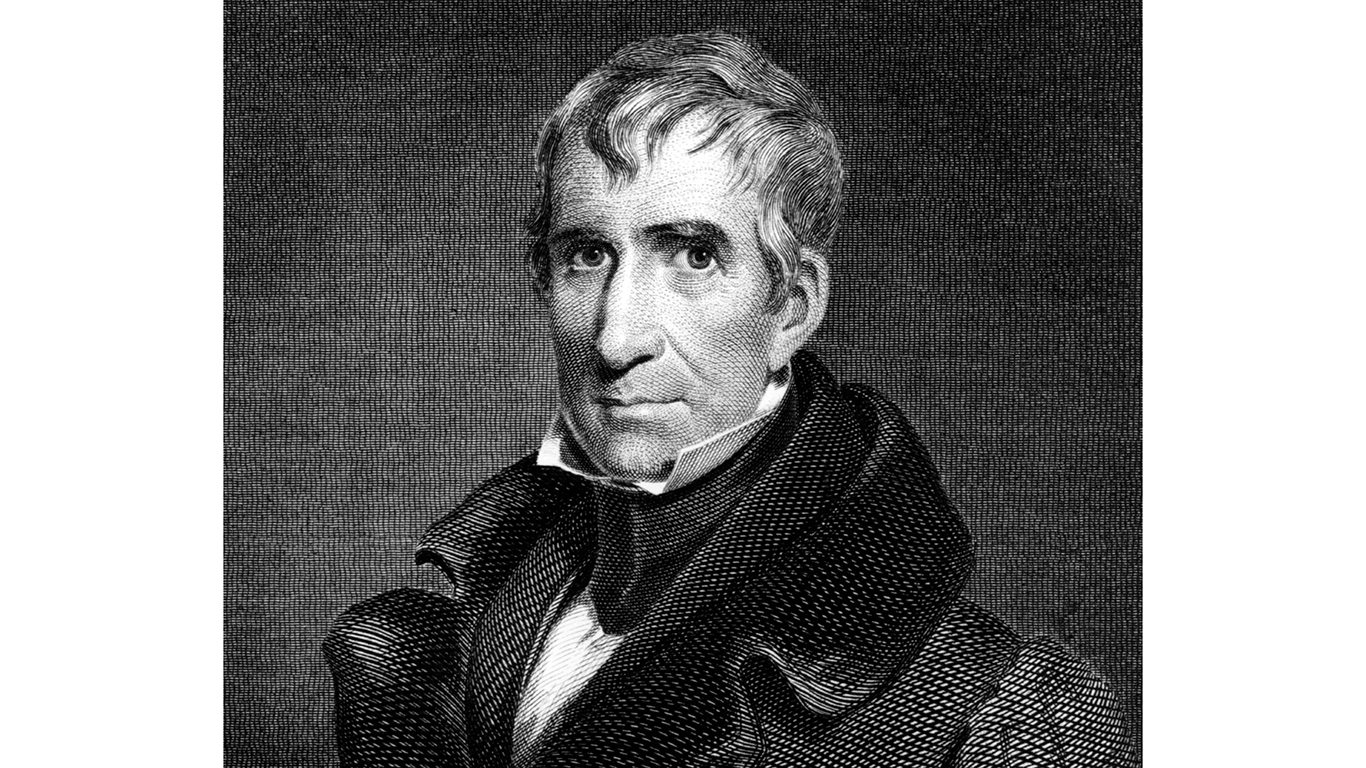
William Henry Harrison (1773-1841)
> Term: 1841-1841
> Party affiliation: Whig
> Notable occupation: Soldier
School children know “Tippecanoe and Tyler too,” the campaign slogan of William Henry Harrison. Tippecanoe was the site of Harrison’s military victory over Native American forces in 1811, and that feat helped him win the presidency.
[in-text-ad-2]

John Tyler (1790-1862)
> Term: 1841-1845
> Party affiliation: Whig
> Notable occupation: Lawyer, vice president
John Tyler was a Virginia legislator who became known as “His Accidency.” That was because he was the first vice president to become commander in chief following the death of his predecessor, Harrison, who had served as president for about a month. Tyler served in the House of Representatives and was governor of Virginia before he became vice president.
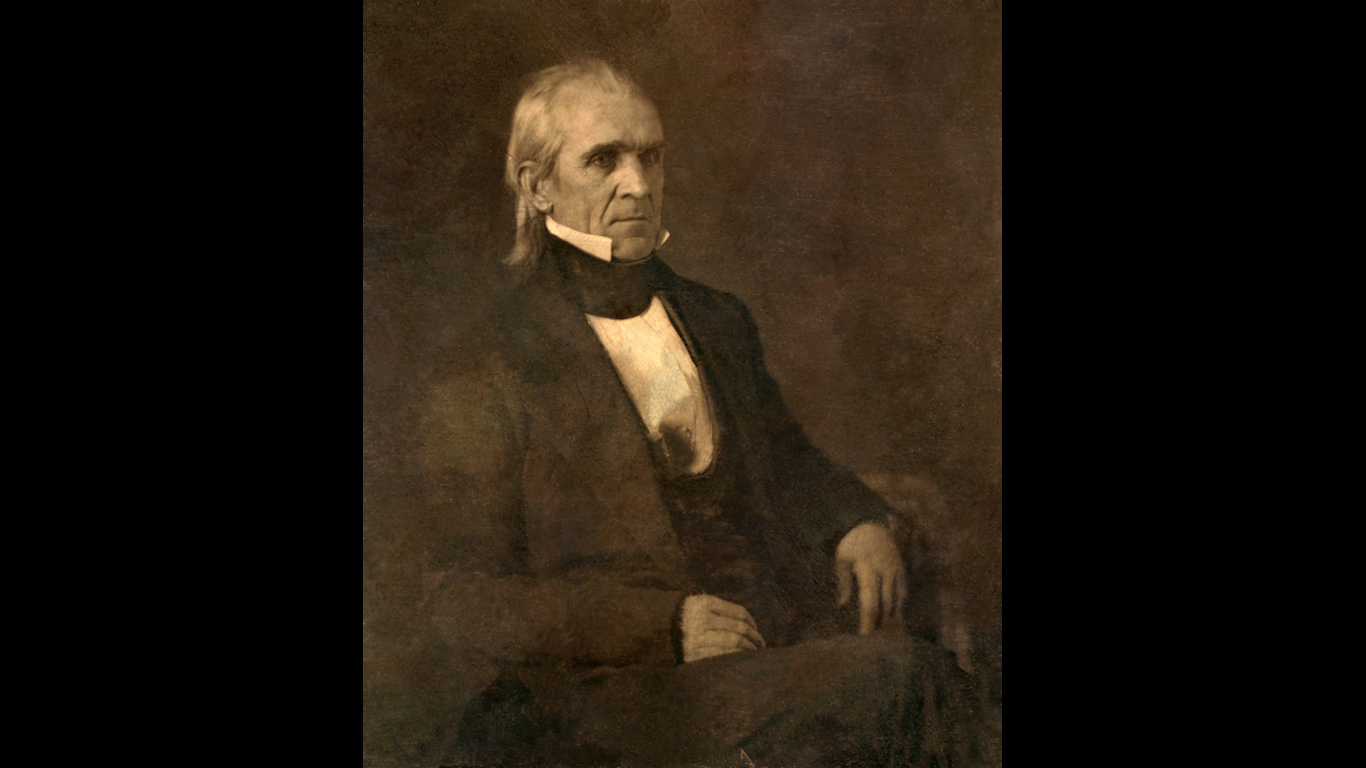
James Polk (1795-1849)
> Term: 1845-1849
> Party affiliation: Democratic
> Notable occupation: Lawyer, governor
James Polk aligned himself with the forces of Jackson and rose to political prominence in his native North Carolina. Sensing the nation’s thirst for expansion in the run-up to the 1844 election, Polk backed annexation of Texas and expansion into the Oregon territory. He also wanted to add California to the Union.
[in-text-ad]
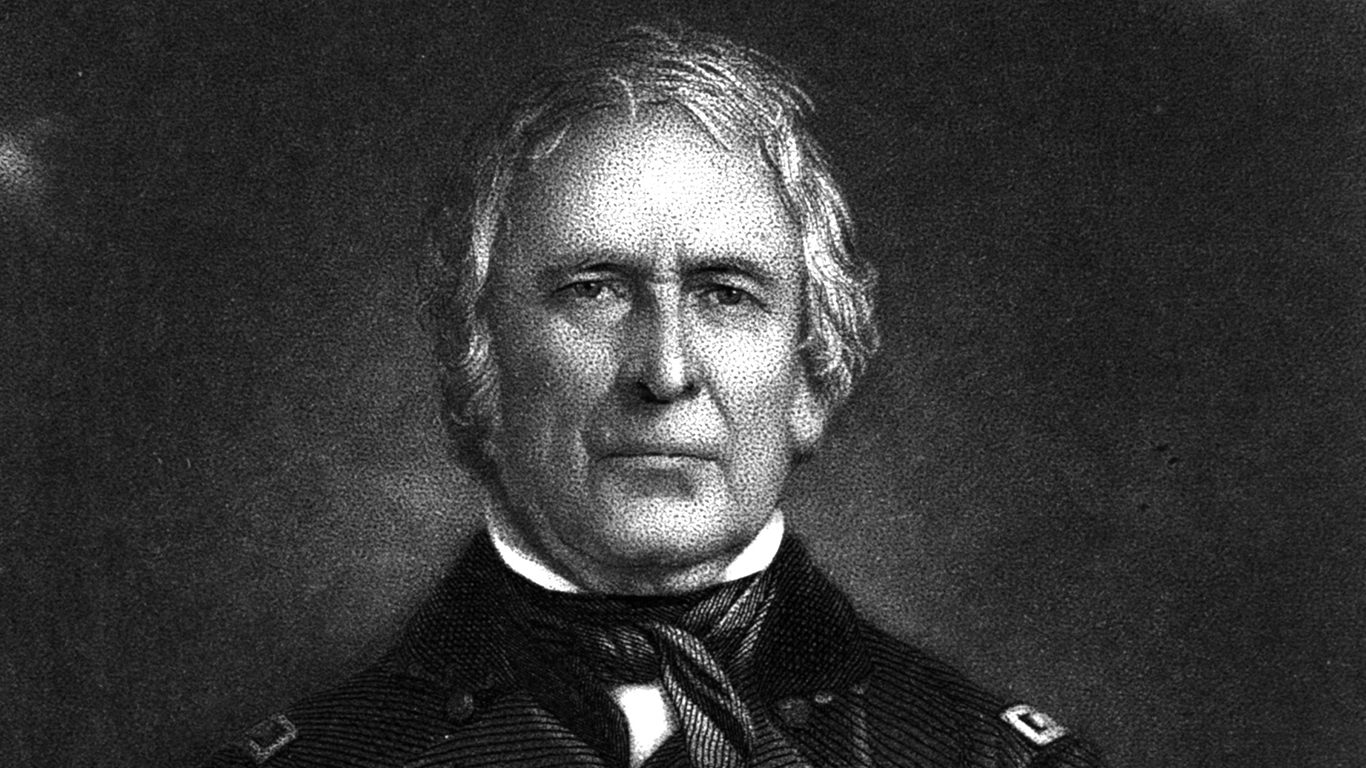
Zachary Taylor (1784-1850)
> Term: 1849-1850
> Party affiliation: Whig
> Notable occupation: Soldier
Zachary Taylor, hero of the Mexican War, appealed to northerners because of his military record and homespun demeanor, and he was acceptable to the South because he owned slaves.
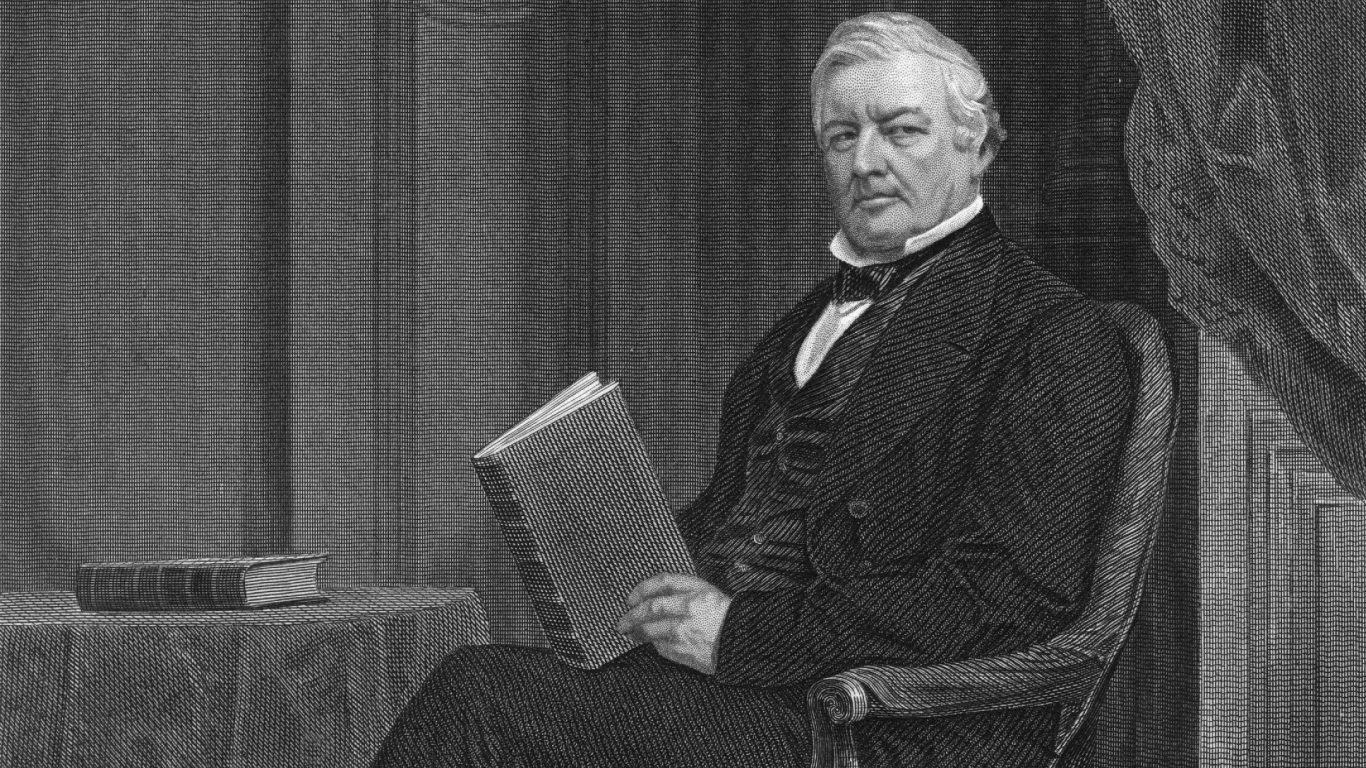
Millard Fillmore (1800-1874)
> Term: 1850-1853
> Party affiliation: Whig
> Notable occupation: Lawyer, congressman
Millard Fillmore was an unremarkable upstate New York politician working closely with the Whig Party. He was elected to the House of Representatives, became vice president under Taylor during a tumultuous time in American history as the North and South were at loggerheads over the extension of slavery to new states and territories. Fillmore became president when Taylor died in office.
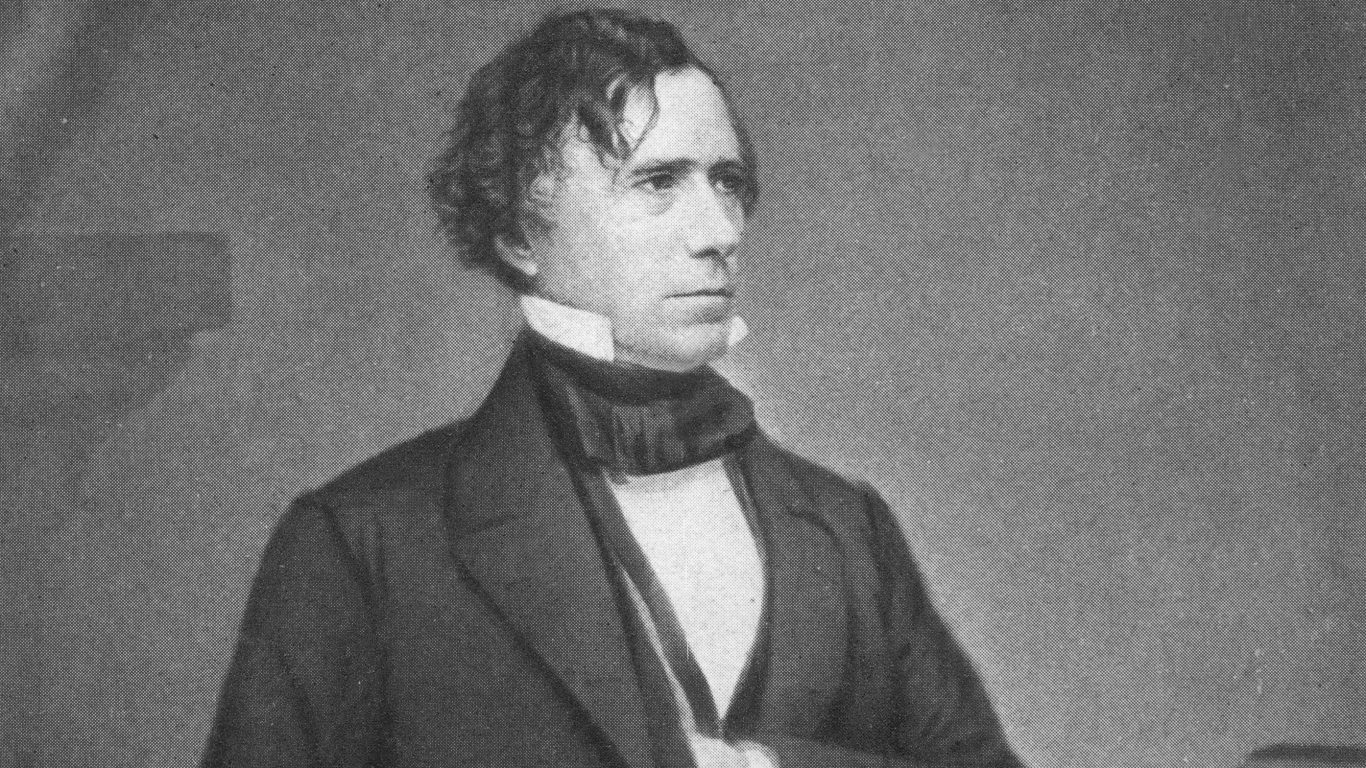
Franklin Pierce (1804-1869)
> Term: 1853-1857
> Party affiliation: Democratic
> Notable occupation: Lawyer, diplomat
Franklin Pierce, son of a governor of New Hampshire, served that state for two terms in the House of Representatives and one term in the Senate. While in Washington, he befriended southern politicians and expressed some sympathy for the southern cause. He left Washington, D.C. in 1842 to return to his private law practice. As the nation was fracturing along sectional lines, the Democrats sought a candidate who could appeal to the North and South. Pierce was backed by New Englanders and southern delegates and became the quintessential dark horse presidential candidate at the 1852 Democratic national convention.
[in-text-ad-2]
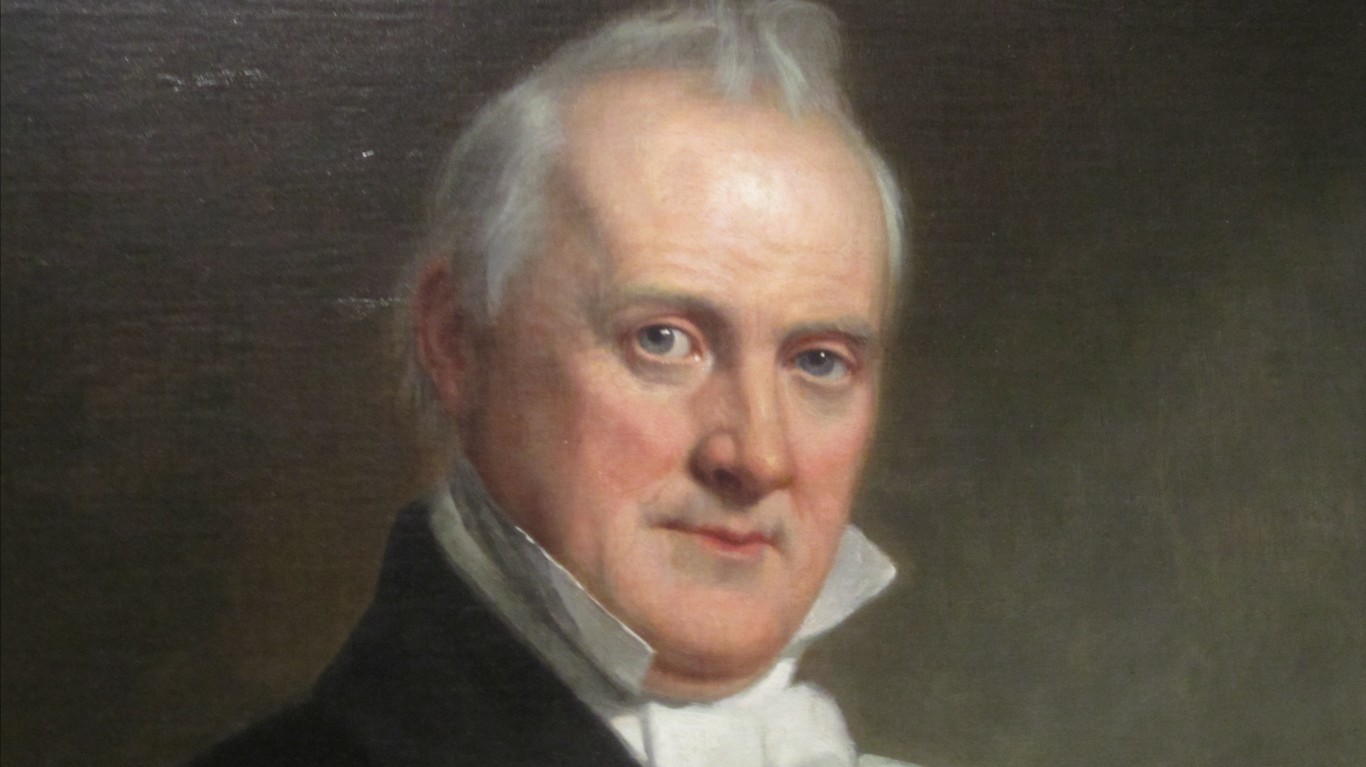
James Buchanan (1791-1868)
> Term: 1857-1861
> Party affiliation: Democratic
> Notable occupation: Lawyer, diplomat
James Buchanan had a long and respected career as an American statesman before he became president. By the time he was elected president in 1856, he had over 40 years of experience. Jackson appointed him as an envoy to Russia. He served as secretary of state under Polk, and as minister to Great Britain under Pierce.
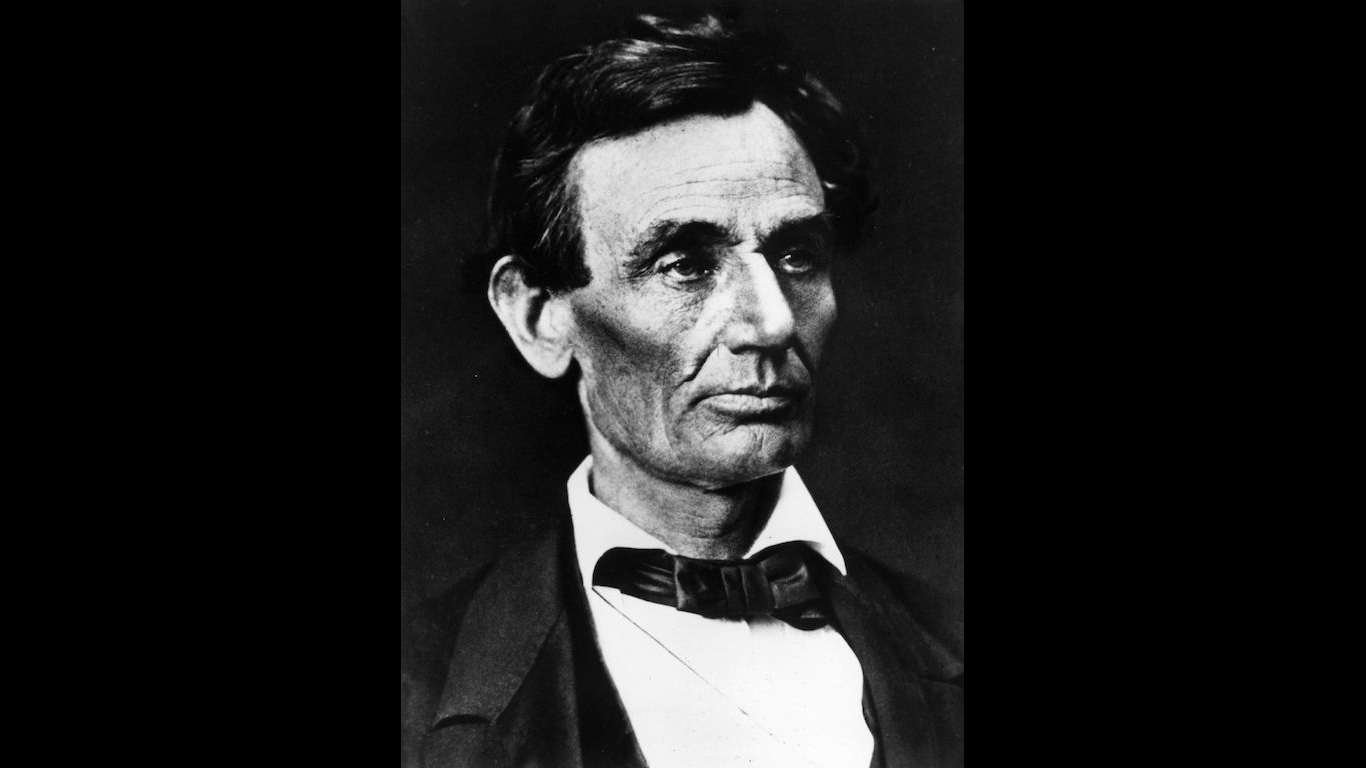
Abraham Lincoln (1809-1865)
> Term: 1861-1865
> Party affiliation: Republican
> Notable occupation: Lawyer
The dissolution of the Whig Party led to the rise of the Republican Party, and Abraham Lincoln saw this as an opportunity to become a leader in Illinois as well as the region. Lincoln’s debates with fellow Illinois rival Stephen Douglas over slavery and the future of the Union gained him national prominence.
[in-text-ad]
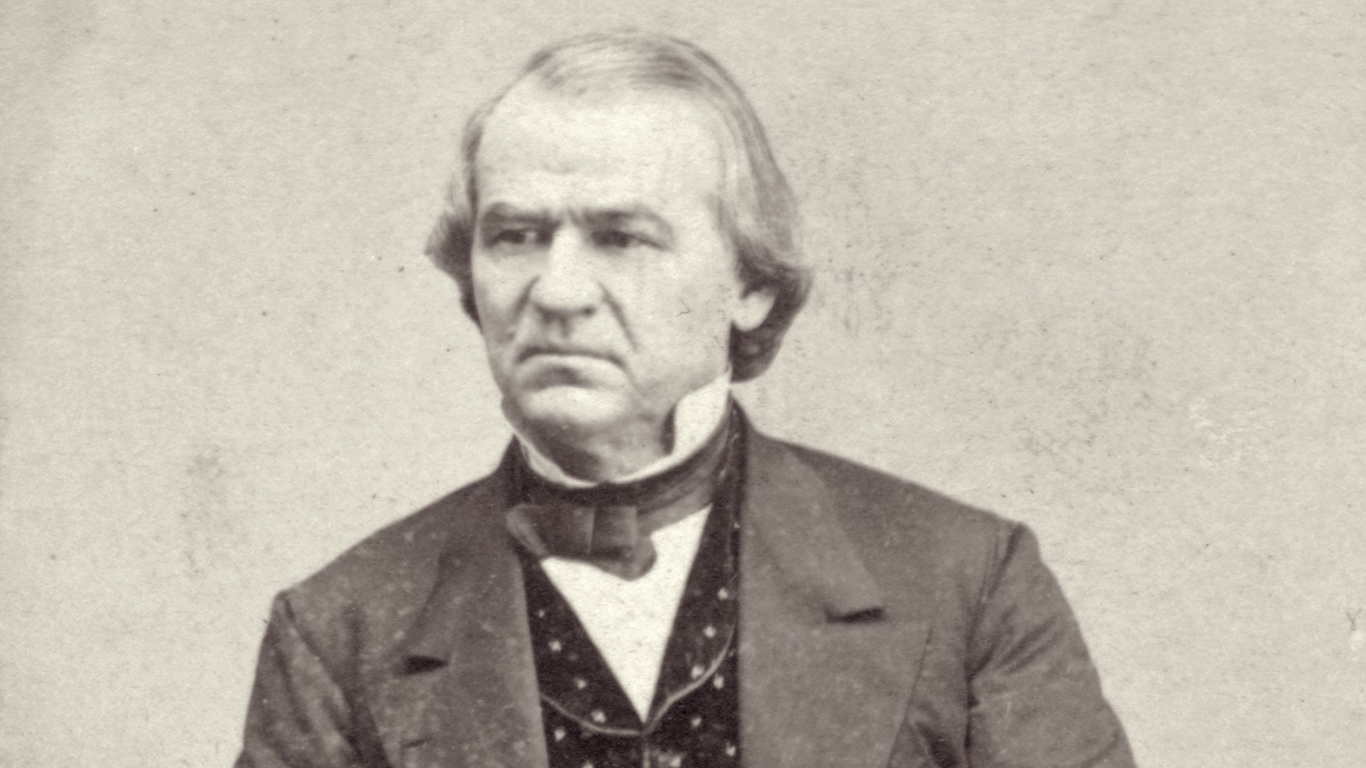
Andrew Johnson (1808-1875)
> Term: 1865-1869
> Party affiliation: Democratic
> Notable occupation: Governor
Andrew Johnson was one of the few southern politicians to remain in Congress during the Civil War. A Democrat serving as vice president under the Republican Lincoln, he became president after Lincoln was assassinated.
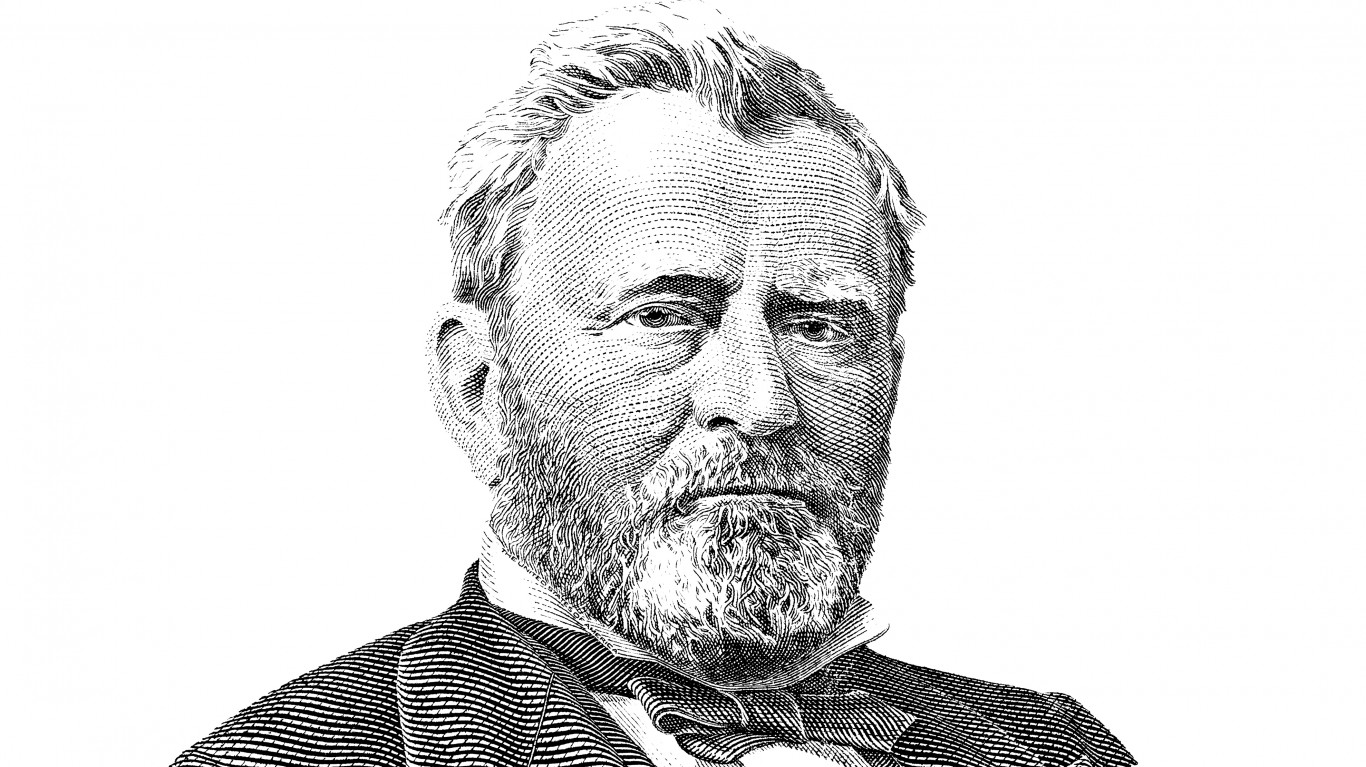
Ulysses S. Grant (1822-1885)
> Term: 1869-1877
> Party affiliation: Republican
> Notable occupation: Soldier
Ulysses S. Grant was the Union’s greatest Civil War hero. He became the standard bearer of the Radical Republicans who wished to impose a more punitive peace on the South.
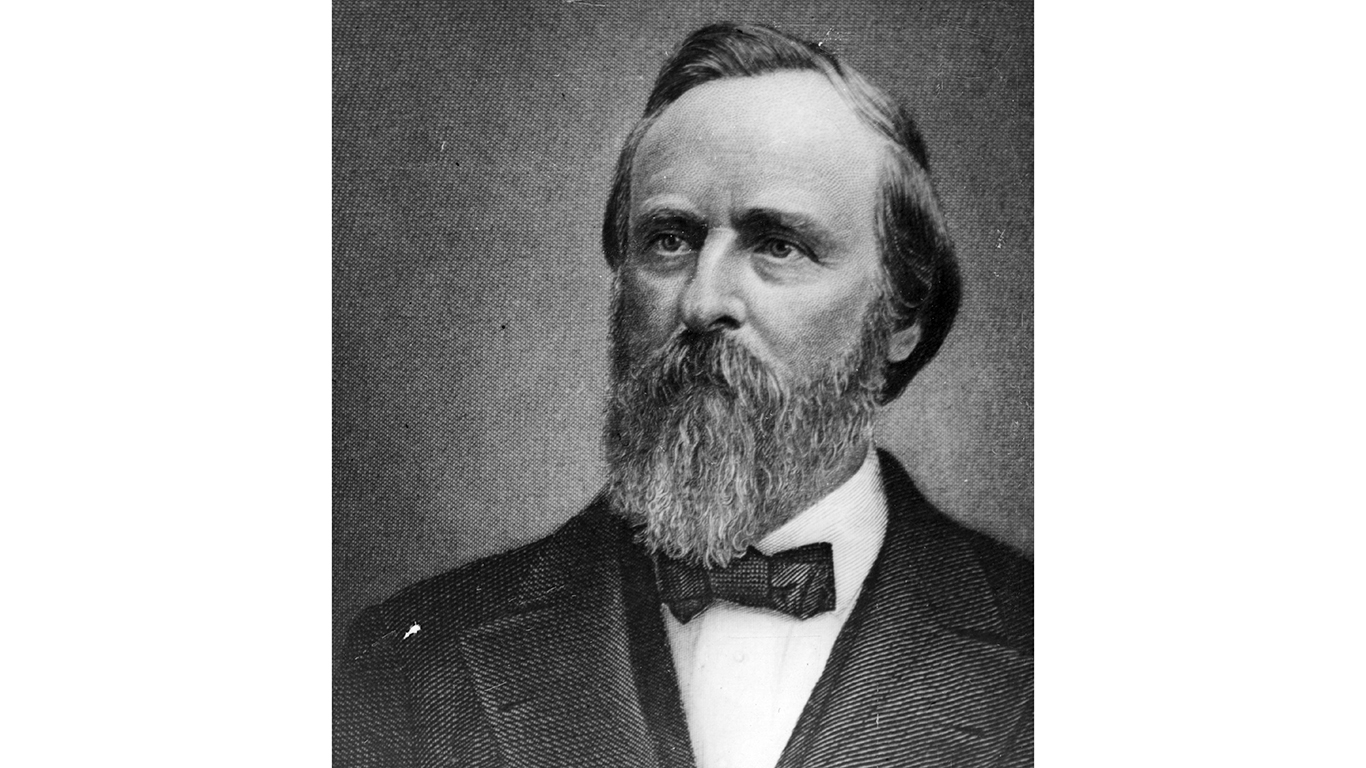
Rutherford B. Hayes (1822-1893)
> Term: 1877-1881
> Party affiliation: Republican
> Notable occupation: Soldier, governor
Rutherford B. Hayes, Civil War veteran and governor of Ohio, believed in securing voting rights for African-Americans and backing the U.S. currency with gold. He wanted to end the violence in the South by phasing out Reconstruction.
[in-text-ad-2]
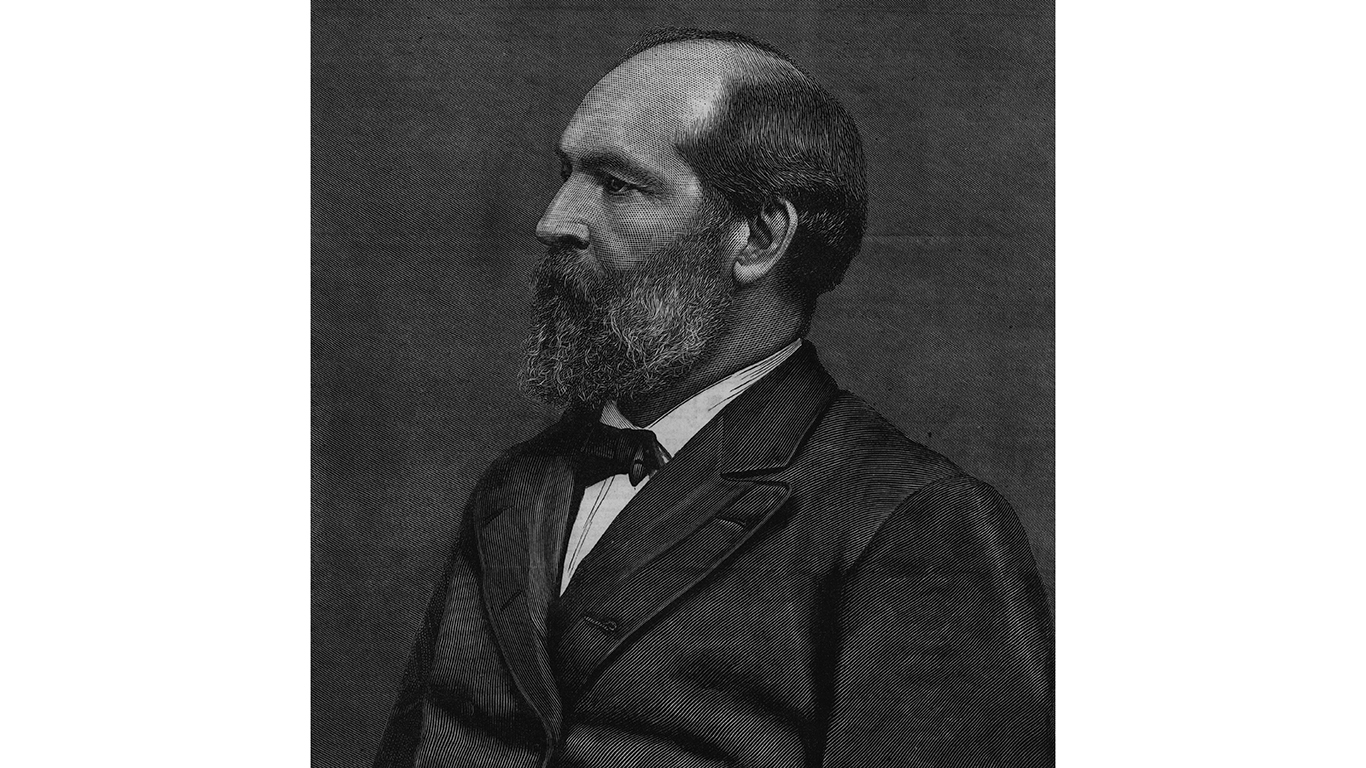
James Garfield (1831-1881)
> Term: 1881-1881
> Party affiliation: Republican
> Notable occupation: Soldier, school president
James Garfield showed leadership qualities by leading Union troops to victory over southern forces in Kentucky. He became a brigadier general at age 31. Garfield served nine terms in the House of Representatives. When an ally, John Sherman, failed to get the Republican nomination in 1880, Garfield eventually got the GOP nod on the 36th ballot.
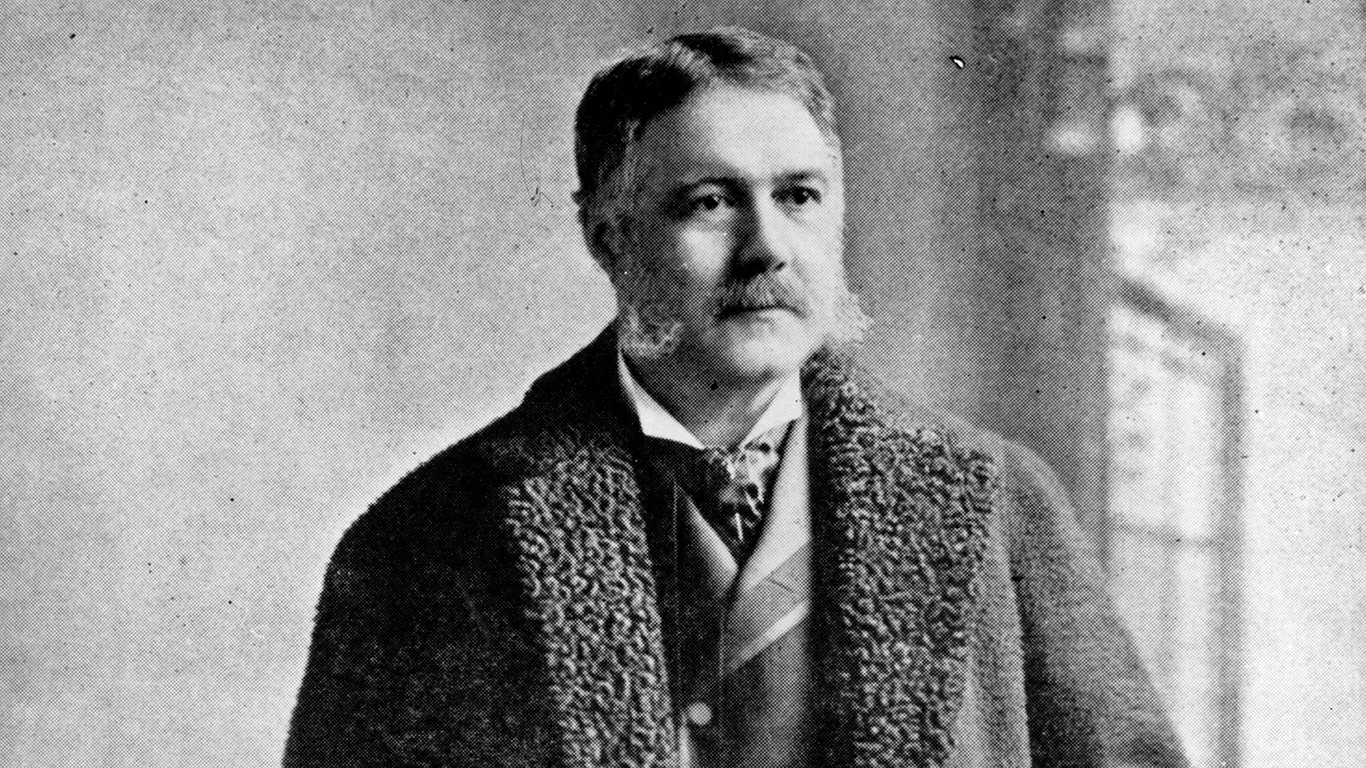
Chester Arthur (1829-1886)
> Term: 1881-1885
> Party affiliation: Republican
> Notable occupation: Lawyer, customs collector
Chester Arthur, who had the reputation of a well-dressed man about town, was a product of the New York patronage system, which helped propel him to the vice presidency. He assumed the presidency following the assassination of President James Garfield.
[in-text-ad]
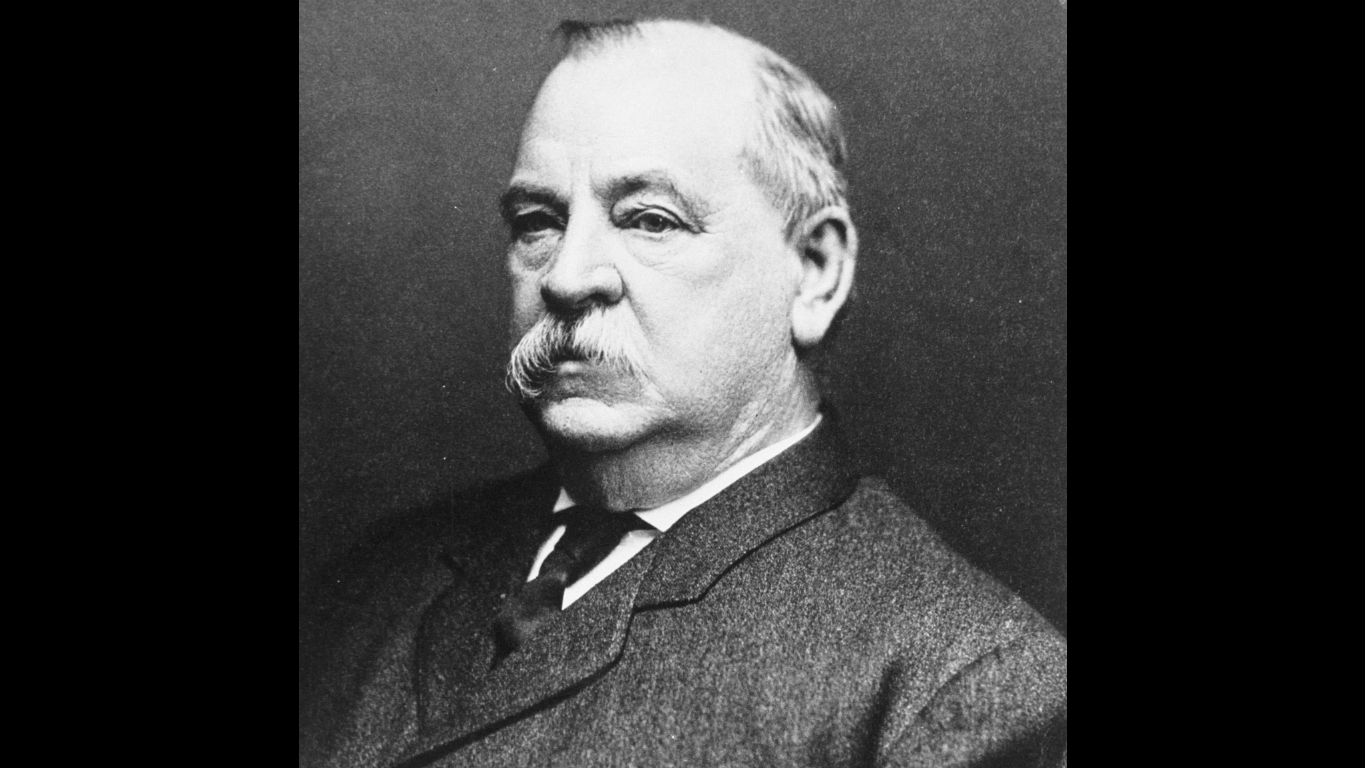
Grover Cleveland (1837-1908)
> Term: 1885-1889, 1893-1897
> Party affiliation: Democratic
> Notable occupation: Governor, sheriff
Grover Cleveland’s nickname was “Ugly Honest” for his no-nonsense look, integrity, and reputation as a reformer. He was a sheriff in Erie County, New York, and during his tenure as sheriff, he hanged two men. The 1884 presidential race was one of the dirtiest in U.S. history, but Cleveland’s dignity in the face of scurrilous accusations helped him win the election. He was the only president to serve two non-consecutive terms.
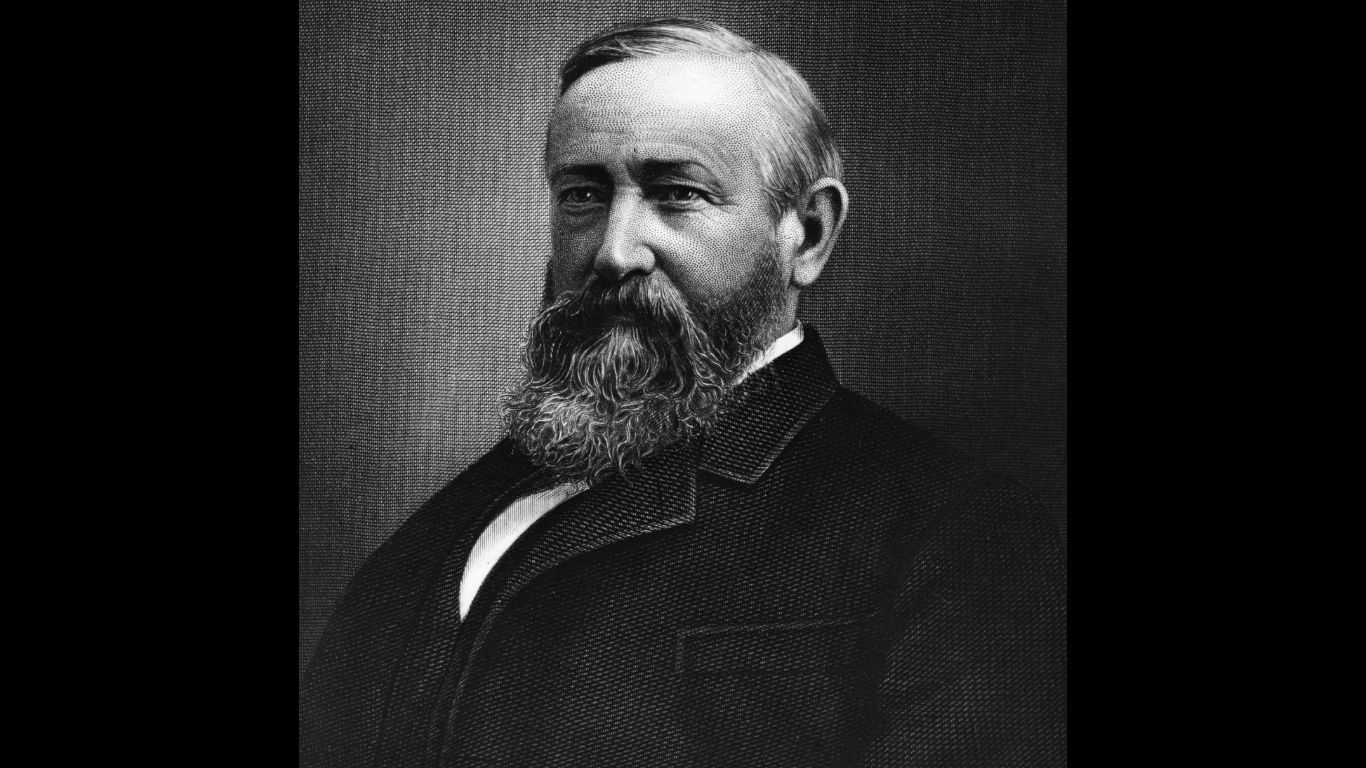
Benjamin Harrison (1833-1901)
> Term: 1889-1893
> Party affiliation: Republican
> Notable occupation: Soldier, senator
The grandson of the nation’s ninth president, Benjamin Harrison, who rose to brevet brigadier general by the end of the Civil War, was a very popular politician in his native Indiana. Harrison supported the rights of Native Americans, homesteaders, and Civil War veterans.
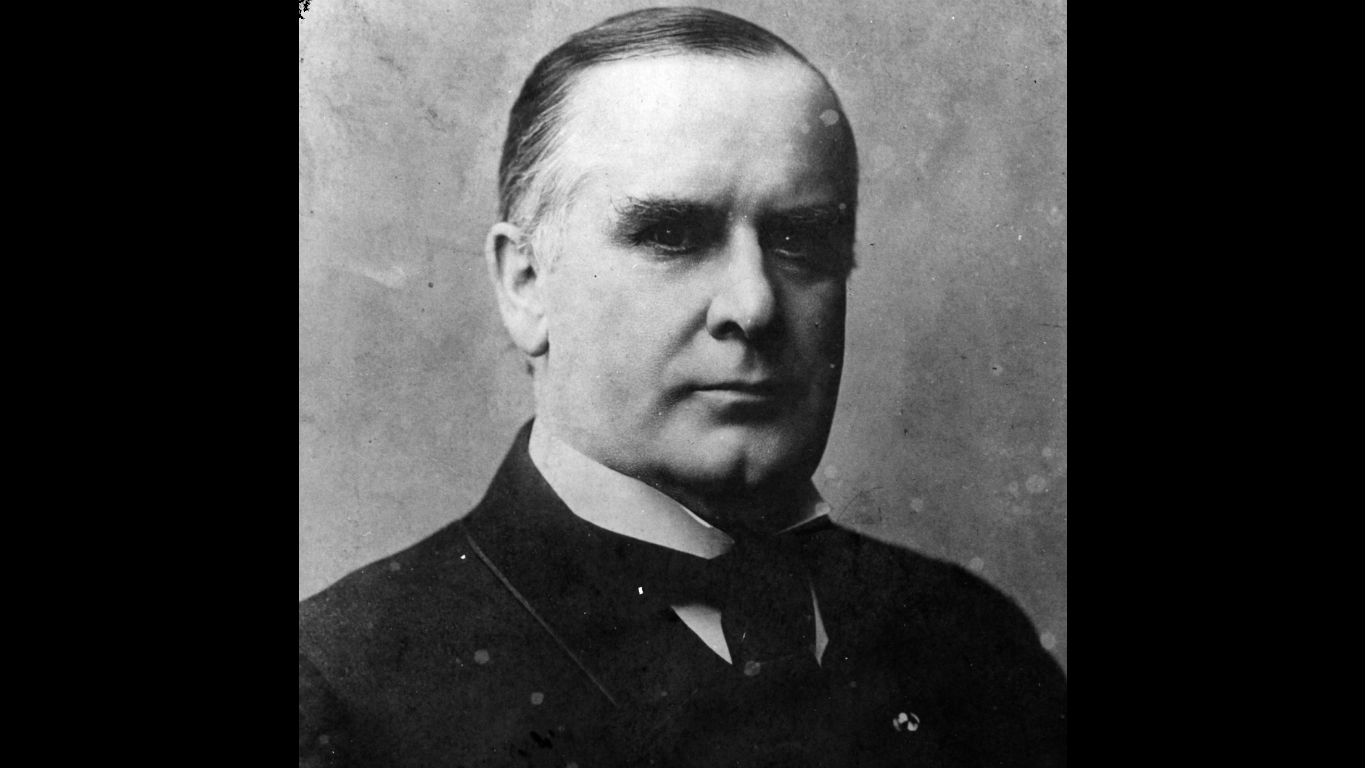
William McKinley (1843-1901)
> Term: 1897-1901
> Party affiliation: Republican
> Notable occupation: Lawyer, governor
William McKinley served for 14 years in Congress and was a two-term governor of Ohio. He was the last president to serve in the Civil War. Like many Republican contemporaries of the late 19th century, McKinley supported high tariffs and was pro-business.
[in-text-ad-2]
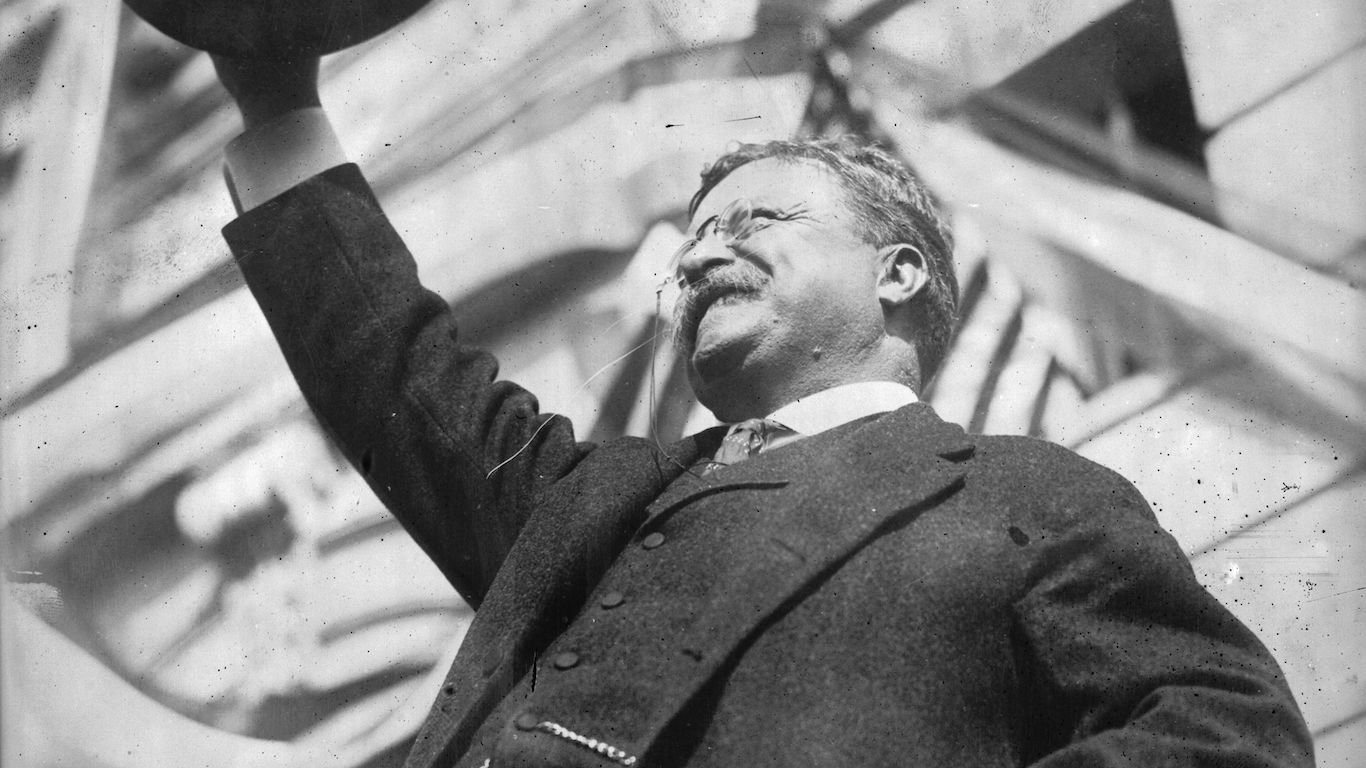
Theodore Roosevelt (1858-1919)
> Term: 1901-1909
> Party affiliation: Republican
> Notable occupation: Soldier, cowboy, vice president
Myriad lifetime experiences prepared Theodore Roosevelt to become president after McKinley was assassinated. Roosevelt was a writer, naturalist, adventurer, cowboy, and soldier. He explored the Great Plains and led the Rough Riders in Cuba during the Spanish-American War. As president, he pushed for more activist federal government, looking to strike a balance between big business and labor and put the nation on the road to world-power status.
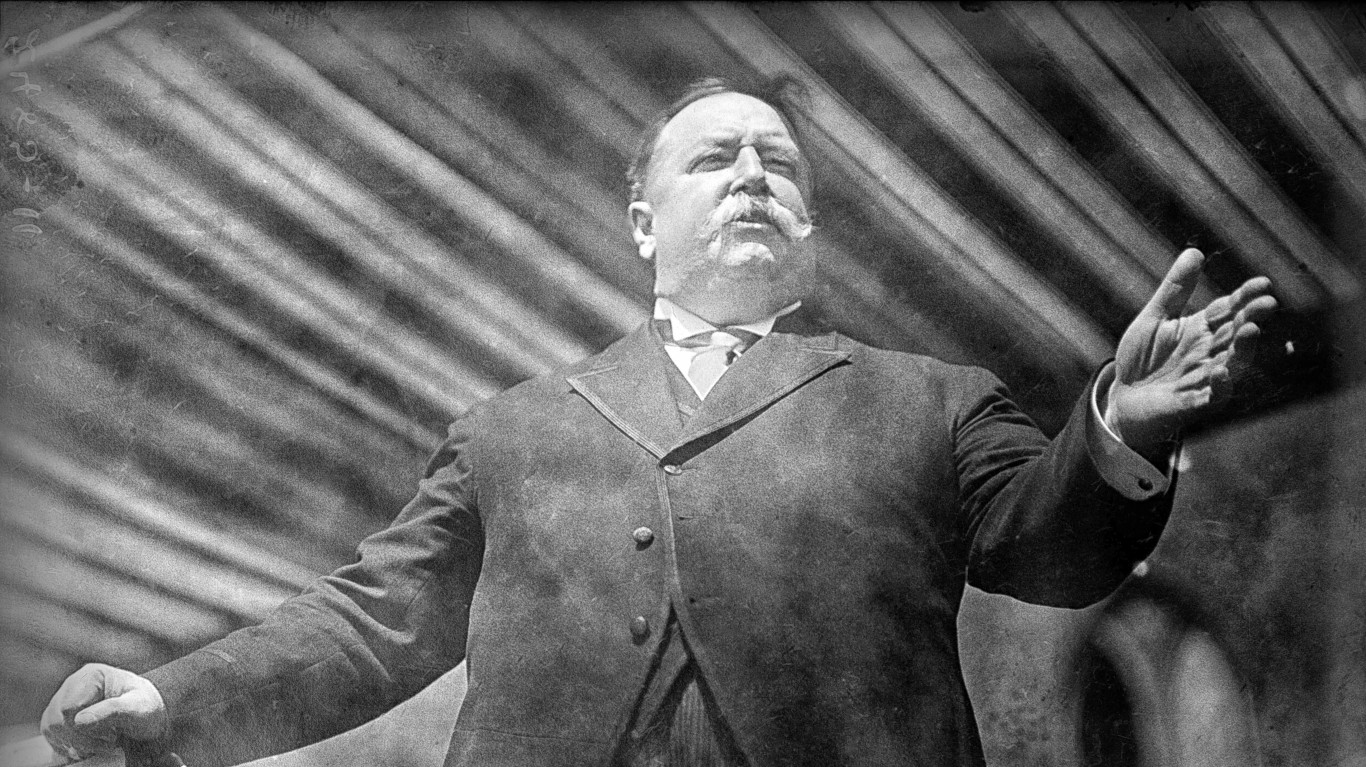
William H. Taft (1857-1930)
> Term: 1909-1913
> Party affiliation: Republican
> Notable occupation: Lawyer, secretary of war
William H. Taft came from a politically well-connected family from Ohio. Buoyed by his ambitious wife, Taft became solicitor general in 1890, and while in Washington, D.C. he became friends with Theodore Roosevelt. Later, Taft became governor general of the Philippines. He received kudos from the Filipino people for his even-handed administration of the islands and drafted a constitution modeled on the American constitution. After the Philippines experience, Taft became secretary of war under Roosevelt and helped oversee the building of the Panama Canal.
[in-text-ad]
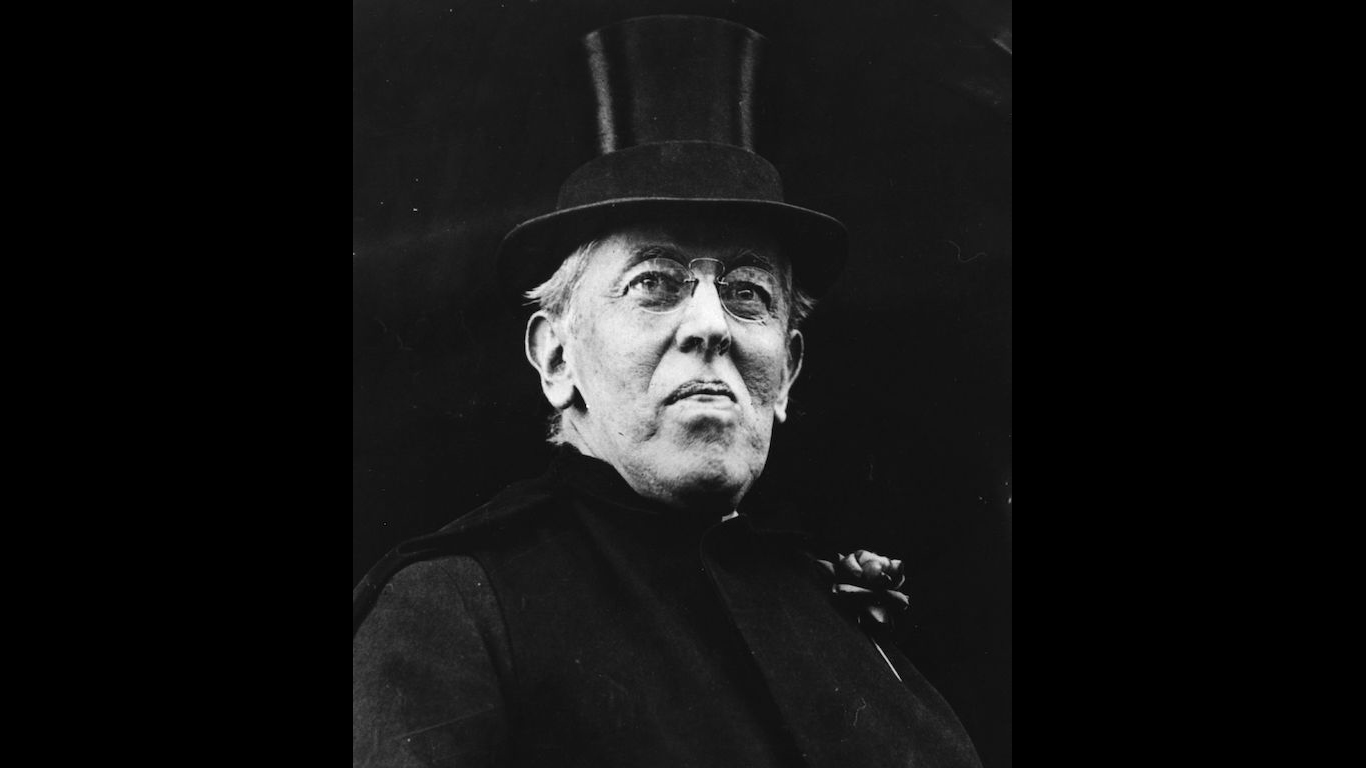
Woodrow Wilson (1856-1924)
> Term: 1913-1921
> Party affiliation: Democratic
> Notable occupation: College president, governor
Wilson’s path to the presidency was through academia as president of Princeton University where he reformed lecture methods. Wilson’s reputation as a reformer got the attention of the New Jersey Democratic Party, which convinced him to run for governor in 1910. Wilson bucked the party bosses and launched progressive measures such as compensation for families of workers killed or injured at work.
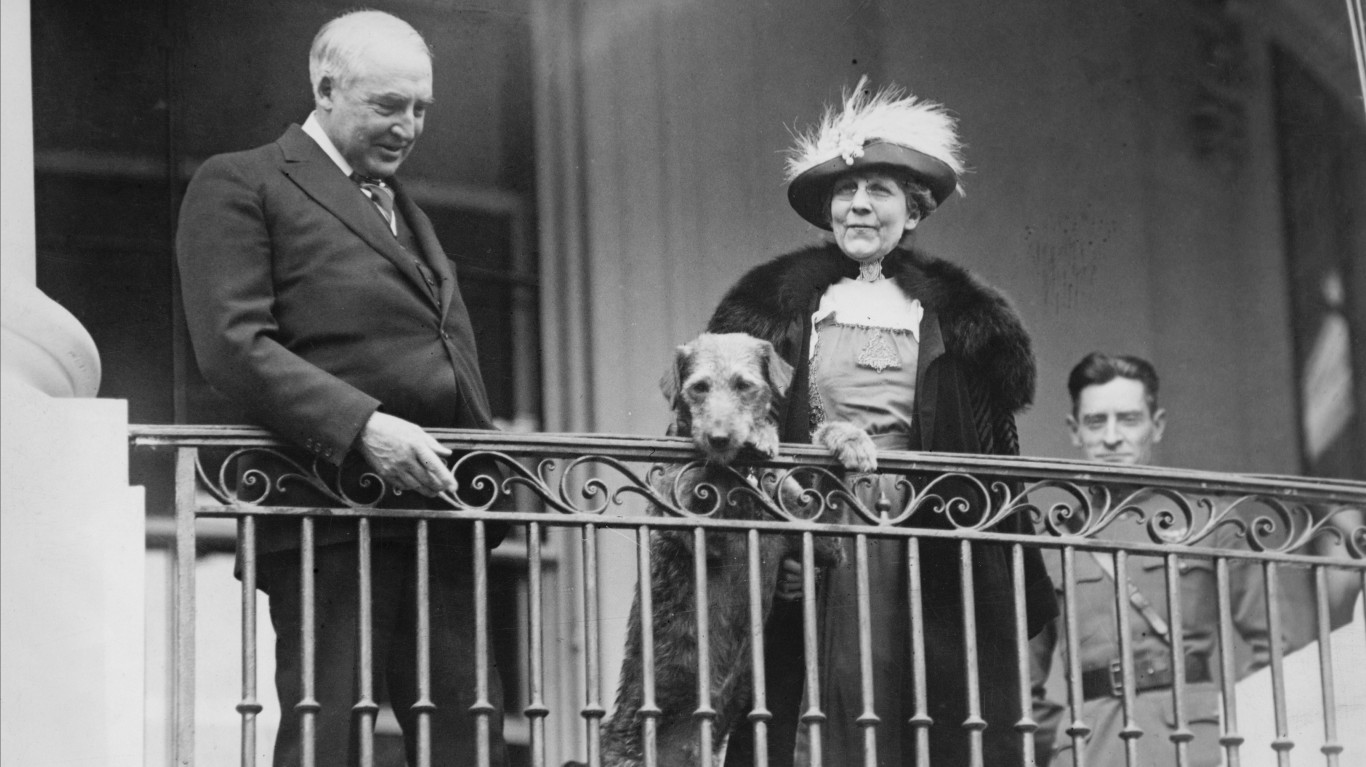
Warren Harding (1865-1923)
> Term: 1921-1923
> Party affiliation: Republican
> Notable occupation: Newspaper publisher, senator
Warren Harding gained political influence in Ohio as a newspaper publisher. Republican political bosses supported Harding, who delivered the nominating address at the Republican National Convention for Taft in 1912. Two years later, Harding was elected to the Senate. He was pro-business, believed in higher tariffs and lower taxes, and was opposed to the United States joining the League of Nations.
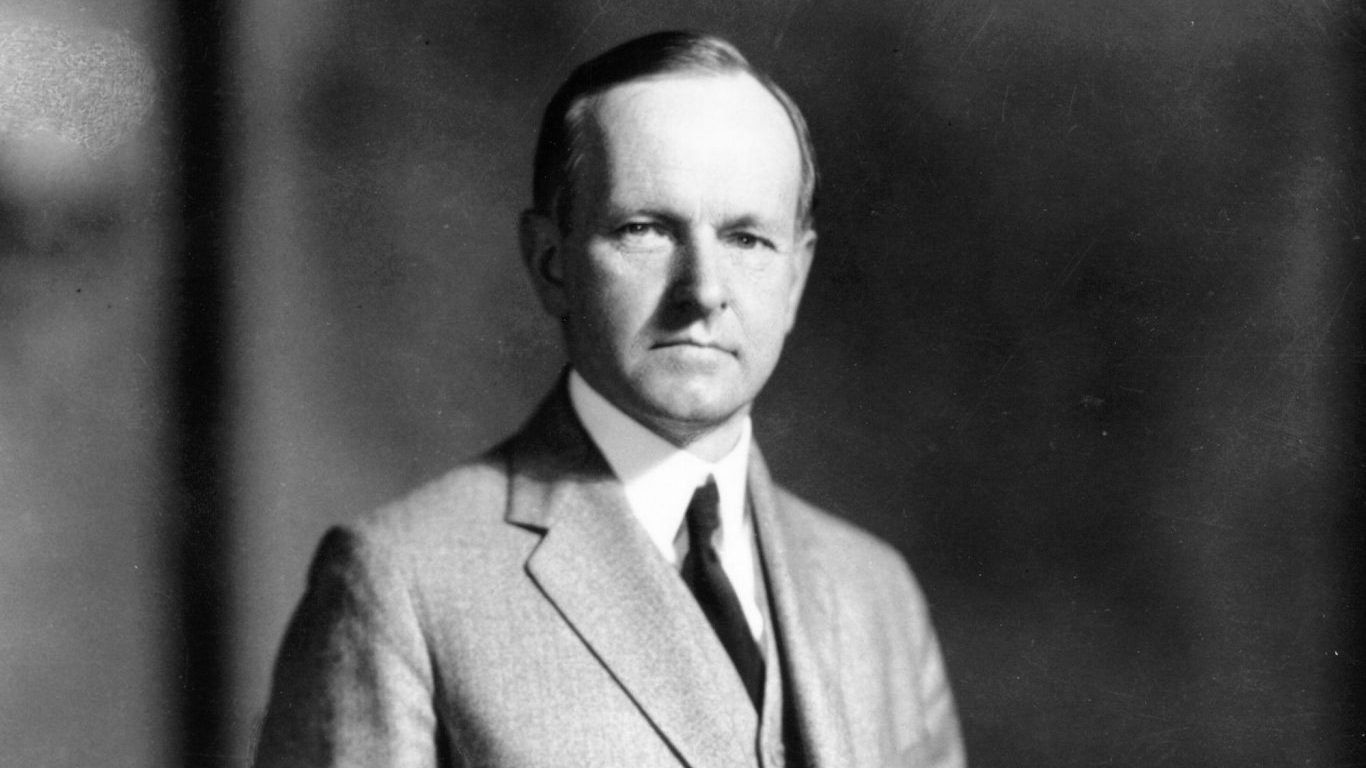
Calvin Coolidge (1872-1933)
> Term: 1923-1929
> Party affiliation: Republican
> Notable occupation: Governor
Taciturn Calvin Coolidge was another accidental president, assuming the presidency after the death of Harding. Coolidge gained national recognition as governor of Massachusetts for his handling of the Boston police strike in 1919. He vigorously put down the strike, believing public safety was at risk, and the country, fearful of radicalism, rallied behind him.
[in-text-ad-2]
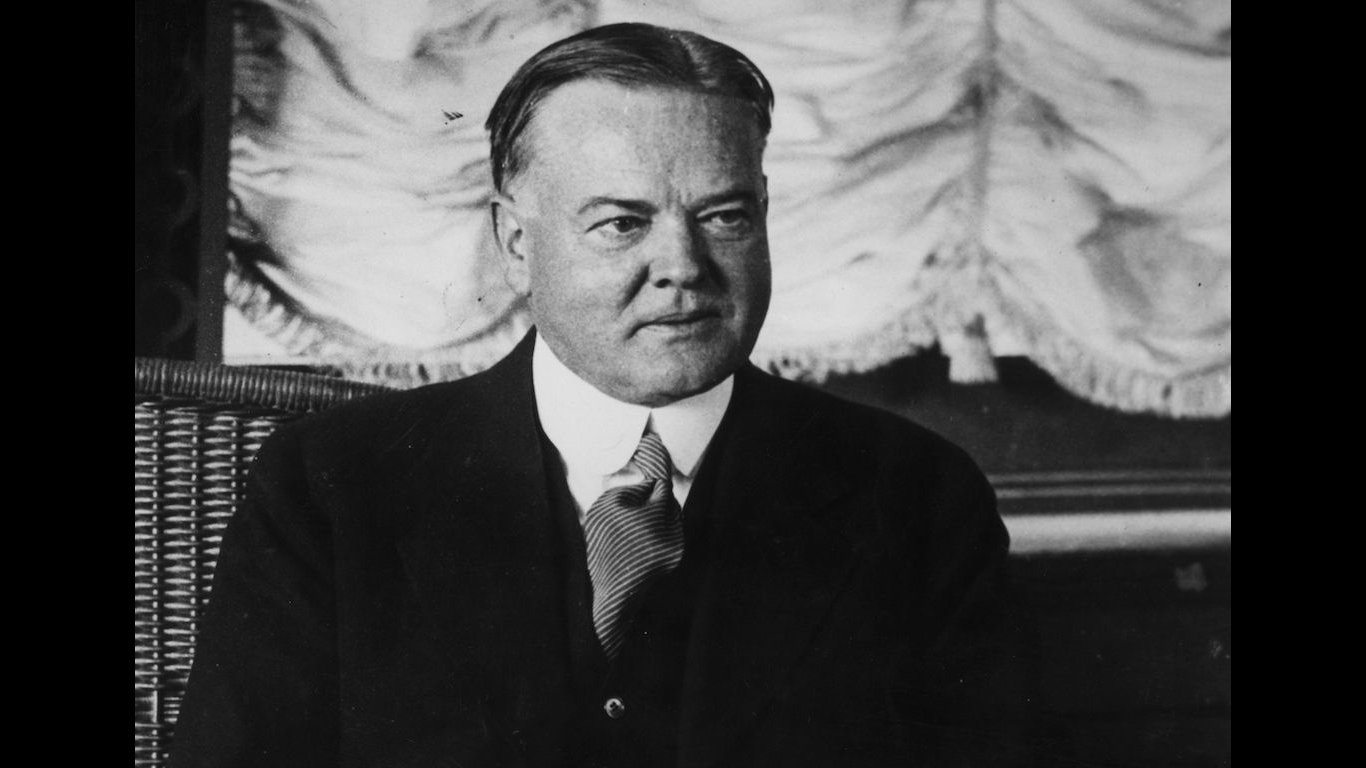
Herbert Hoover (1874-1964)
> Term: 1929-1933
> Party affiliation: Republican
> Notable occupation: Mining engineer, businessman
Herbert Hoover was raised a Quaker who believed in the power of the individual and the importance of charity. He first gained national prominence after he was asked by the U.S. Consul to help evacuate Americans from Europe during World War I. After the U.S. entered the war, President Wilson named Hoover to run the U.S. Food Administration. Once the war ended, Hoover headed the European Relief and Rehabilitation Administration that brought food and other supplies to the continent. He served in the Harding and Coolidge administrations, enhancing his reputation for efficiency and reform. In 1927, Hoover coordinated relief efforts for those displaced by the devastating Mississippi River floods.
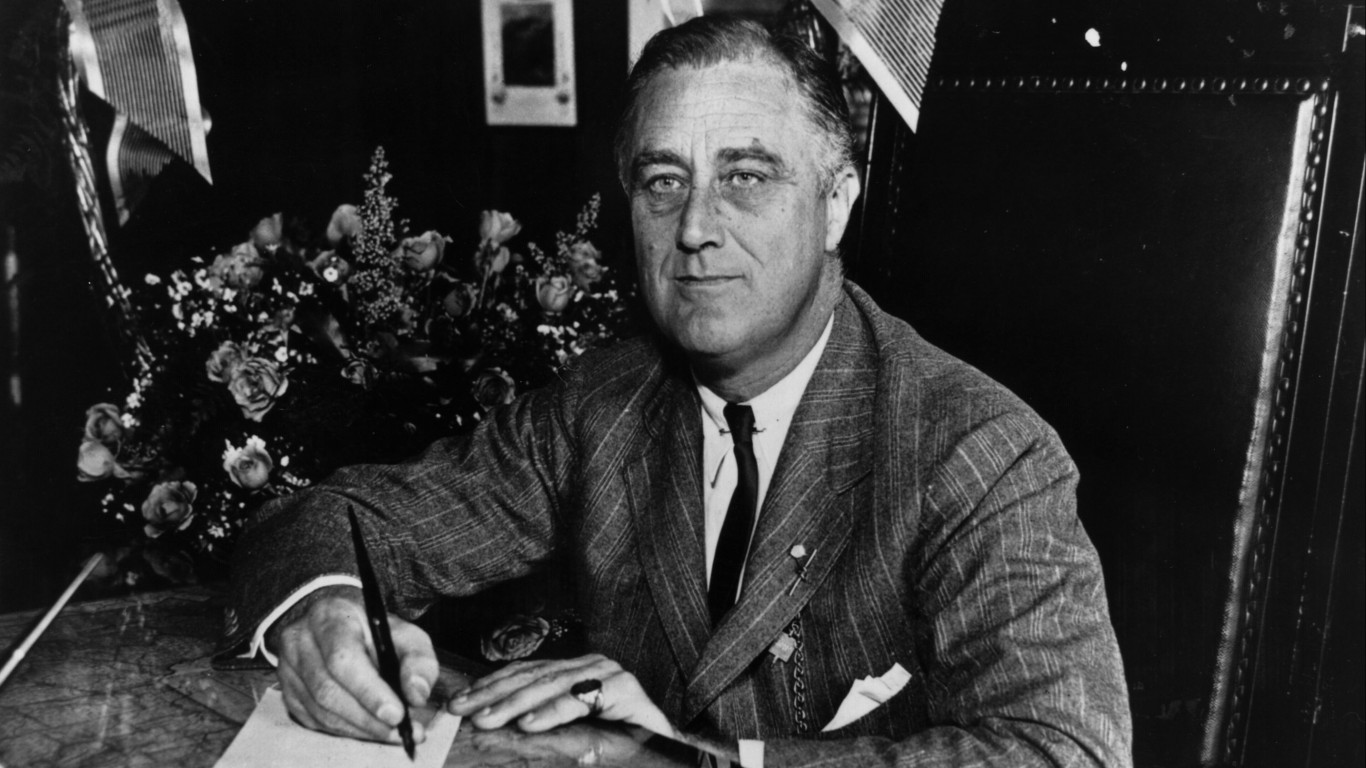
Franklin D. Roosevelt (1882-1945)
> Term: 1933-1945
> Party affiliation: Democratic
> Notable occupation: Governor
Franklin D. Roosevelt was trained as a lawyer, but his real love was politics. He wanted the opportunity to be a leader, and he greatly admired his relative, Theodore Roosevelt, the nation’s 26th president. FDR contracted polio in 1921, but the disease did not defeat him. He became governor of New York in 1928 and then was elected president for an unprecedented four terms.
[in-text-ad]
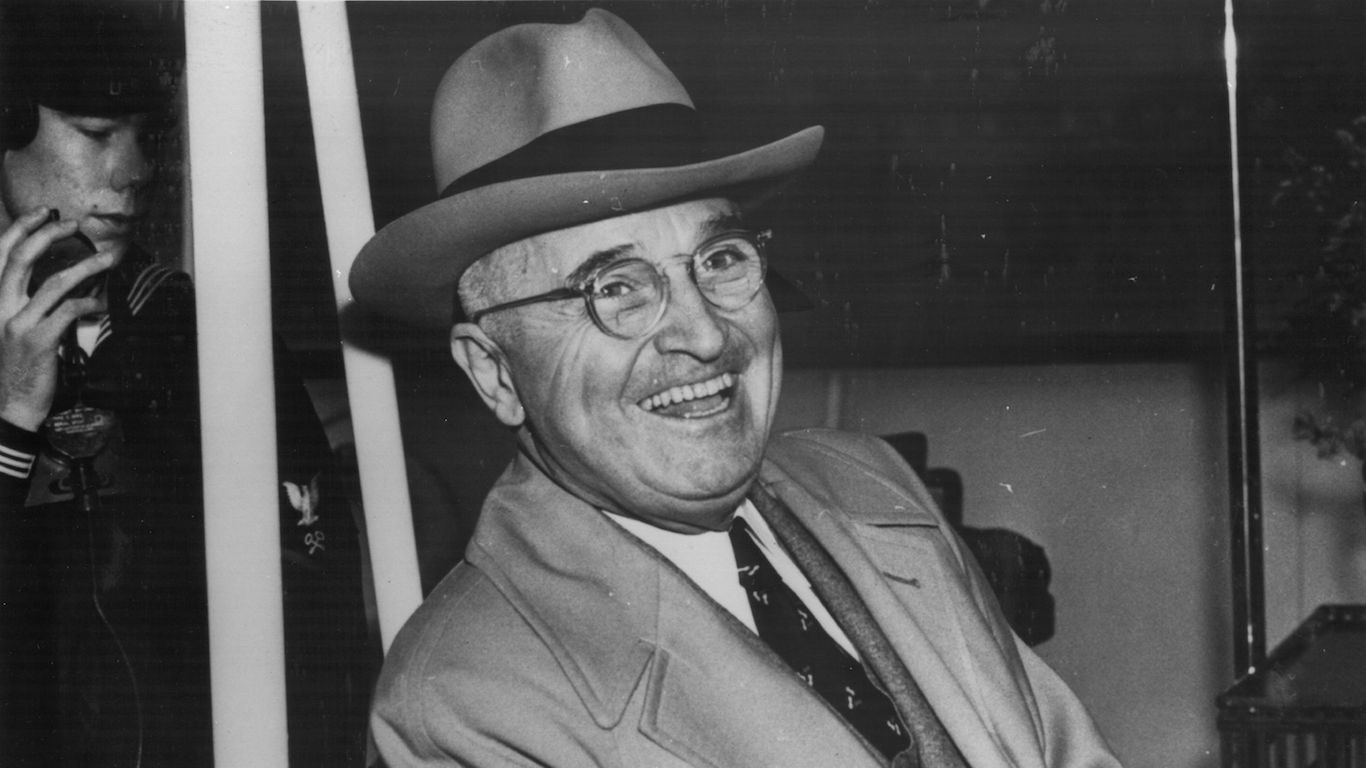
Harry S. Truman (1884-1972)
> Term: 1945-1953
> Party affiliation: Democratic
> Notable occupation: Farmer, businessman
Harry Truman, who grew up on a farm in Missouri, developed leadership skills while commanding soldiers in combat in World War I. He forged friendships with soldiers from the Kansas City area that would eventually create a political power base. Under the auspices of Kansas City Democratic Party boss Thomas J. Pendergast, Truman ran for political office and became district judge, modernizing roads in his district. He developed a reputation for honesty and began to win support from African-American and ethnic groups. He was elected senator in 1934 and became the vice presidential nominee in 1944.
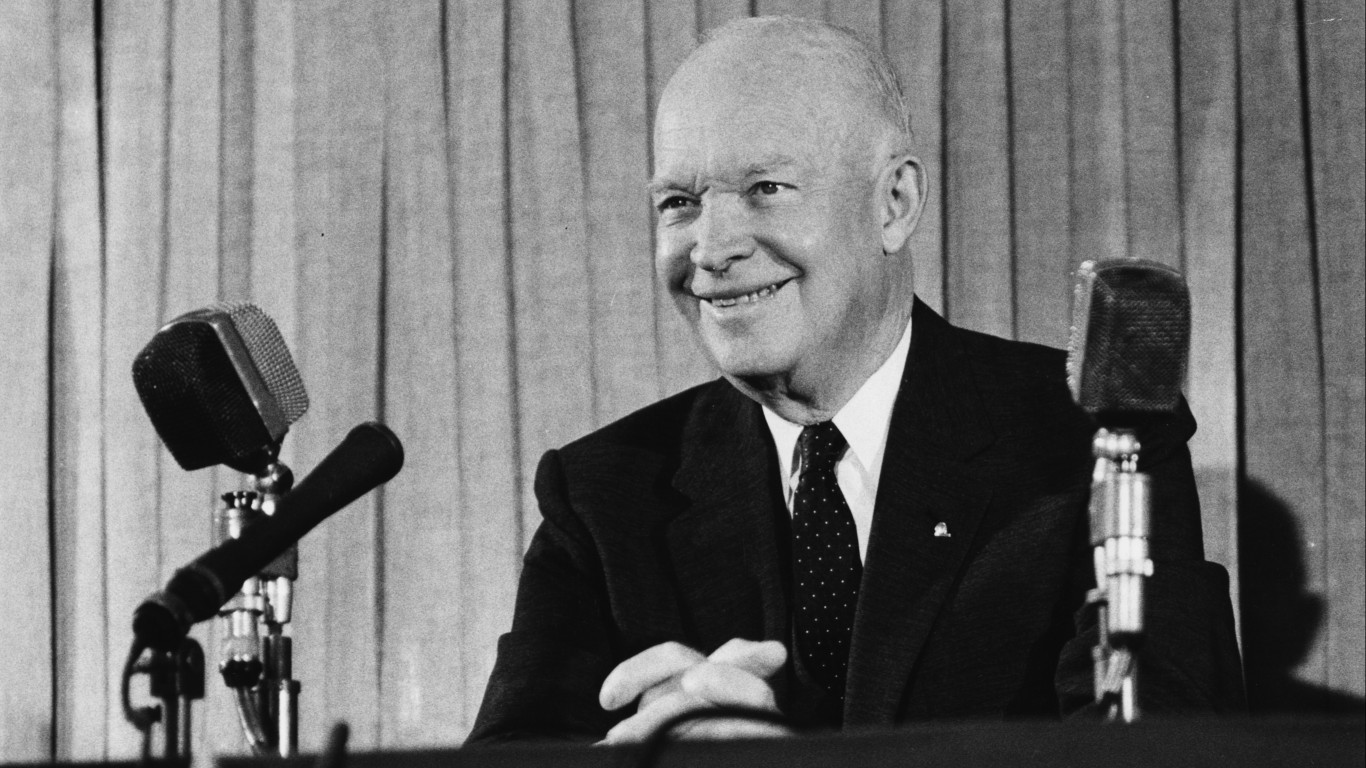
Dwight Eisenhower (1890-1969)
> Term: 1953-1961
> Party affiliation: Republican
> Notable occupation: Soldier
Dwight Eisenhower led the western Allies to victory in World War II, displaying the leadership and management skills that would enable him to become the nation’s 34th president. He won in a landslide over Democrat Adlai Stevenson in 1952.
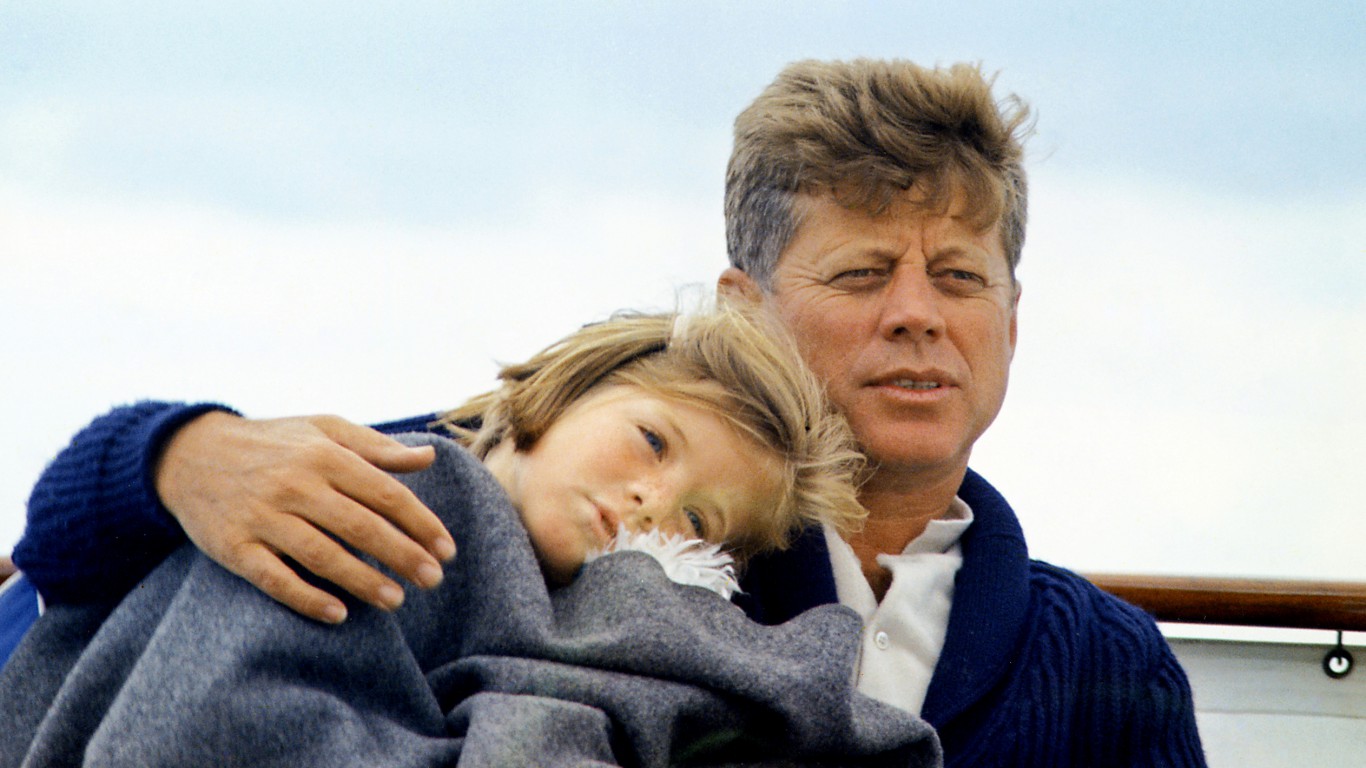
John F. Kennedy (1917-1963)
> Term: 1961-1963
> Party affiliation: Democratic
> Notable occupation: Senator, congressman
John F. Kennedy was not his father’s first choice to fulfill the Kennedy presidential ambitions. That was supposed to be older brother Joseph. But the elder son was killed during a bombing mission in World War II, so the task fell on JFK. Kennedy’s leadership skills were burnished during World War II, when, as a lieutenant, he helped save crew members of his patrol boat that had been cut in half by a Japanese destroyer. Kennedy’s heroism and political connections helped launch his career, which began with him serving in the House of Representatives and the Senate.
[in-text-ad-2]
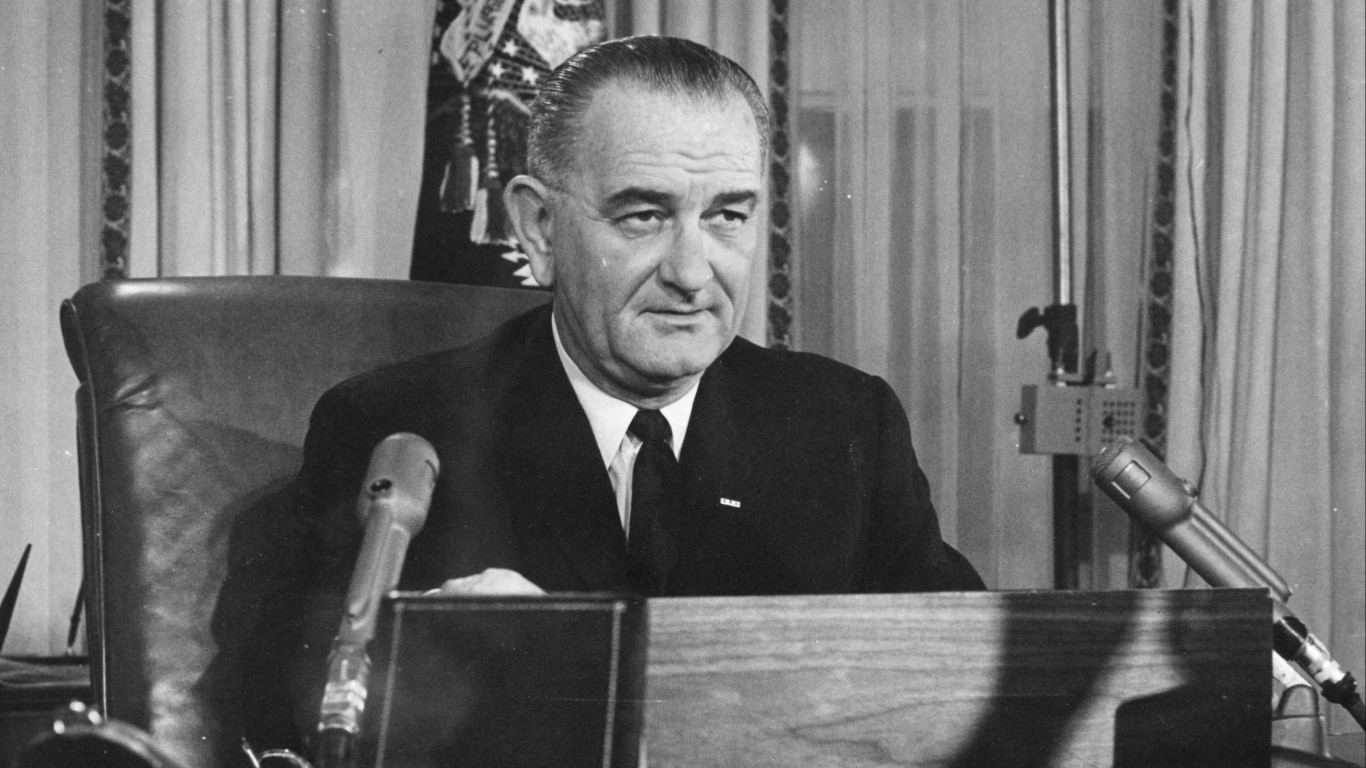
Lyndon Johnson (1908-1973)
> Term: 1963-1969
> Party affiliation: Democratic
> Notable occupation: Senator, congressman
Lyndon Johnson became president after the assassination of Kennedy. His path to the presidency began in the rough-and-tumble world of Texas politics, where he developed the persuasive skills that would define his career. Johnson served six terms in the House of Representative and was elected to the Senate in 1948, eventually becoming the Senate majority leader in 1954. He became Kennedy’s vice president to help gain Democratic support in the South.
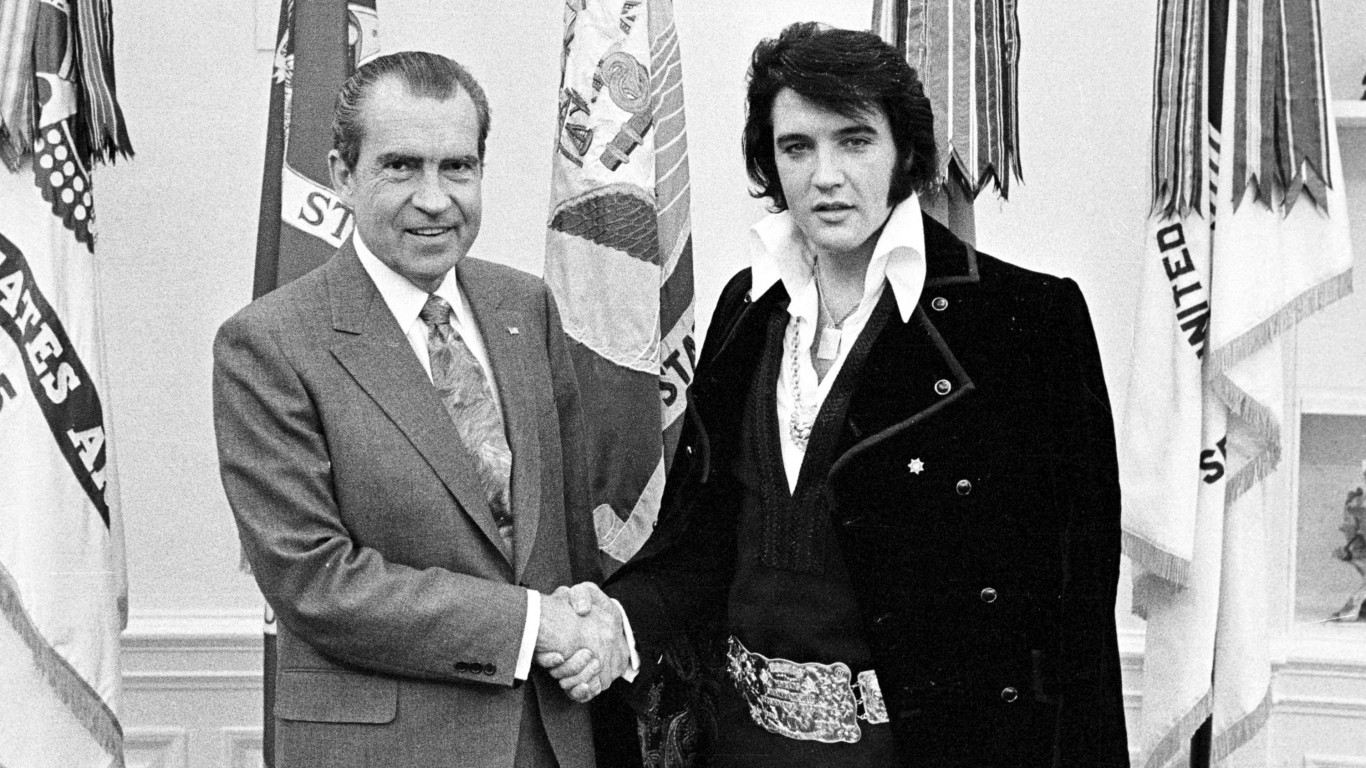
Richard Nixon (1913-1994)
> Term: 1969-1974
> Party affiliation: Republican
> Notable occupation: Lawyer, congressman
Richard Nixon, the only president to resign from office, attended Whittier College and developed a reputation as a vigorous debater. He would put his argumentative skills to use as congressman and member from 1948 to 1950 of the House Un-American Activities Committee, which sought to root out communists in the U.S. government. He saw an opportunity to win the presidency in 1968 as the country was divided over Vietnam and racial strife was tearing apart the nation.
[in-text-ad]
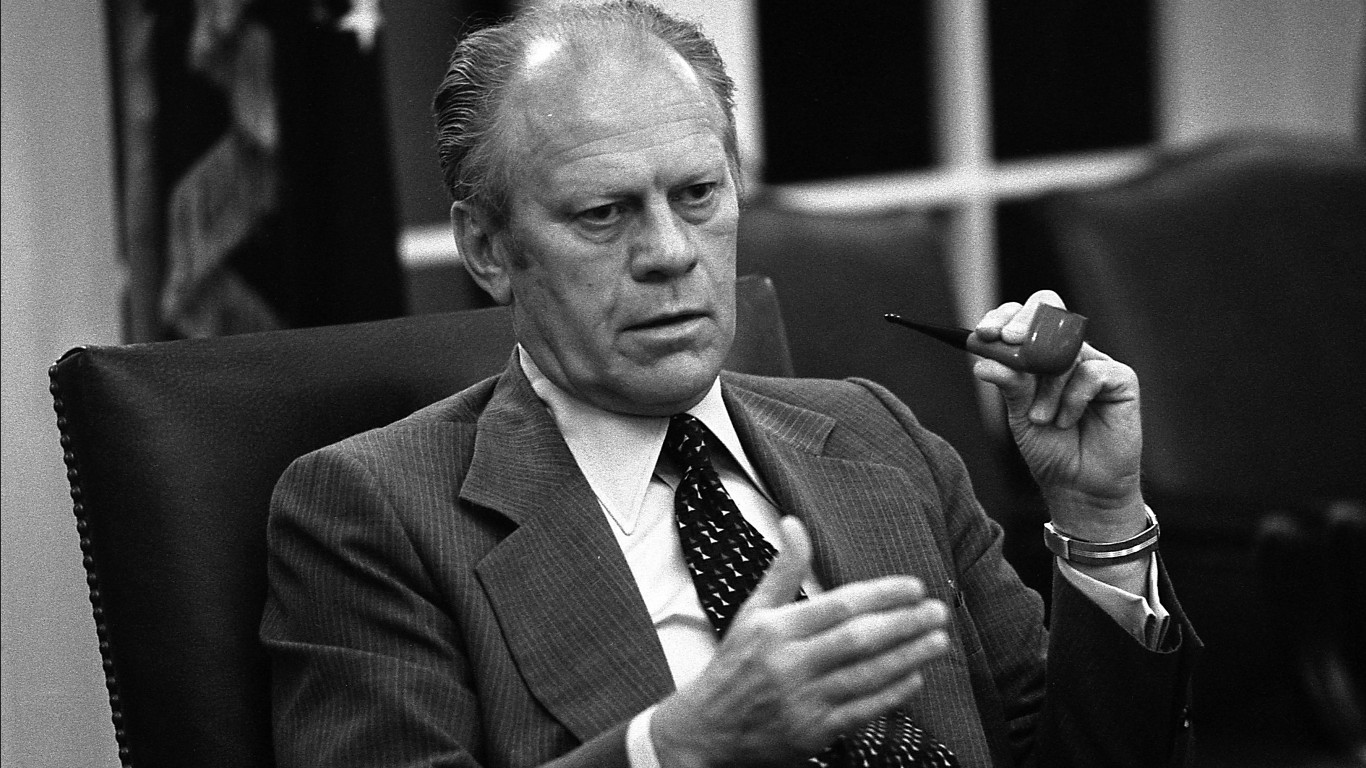
Gerald Ford (1913-2006)
> Term: 1974-1977
> Party affiliation: Republican
> Notable occupation: Lawyer, vice president
Gerald Ford assumed the presidency after Richard Nixon resigned in 1974 and served out the last two years of his term. Ford served in the House of Representatives for 25 years and was a member of the Warren Commission that investigated the assassination of Kennedy. He was House minority leader for eight years before becoming vice president. Ford became vice president because his predecessor, Spiro Agnew, resigned in disgrace in 1973.
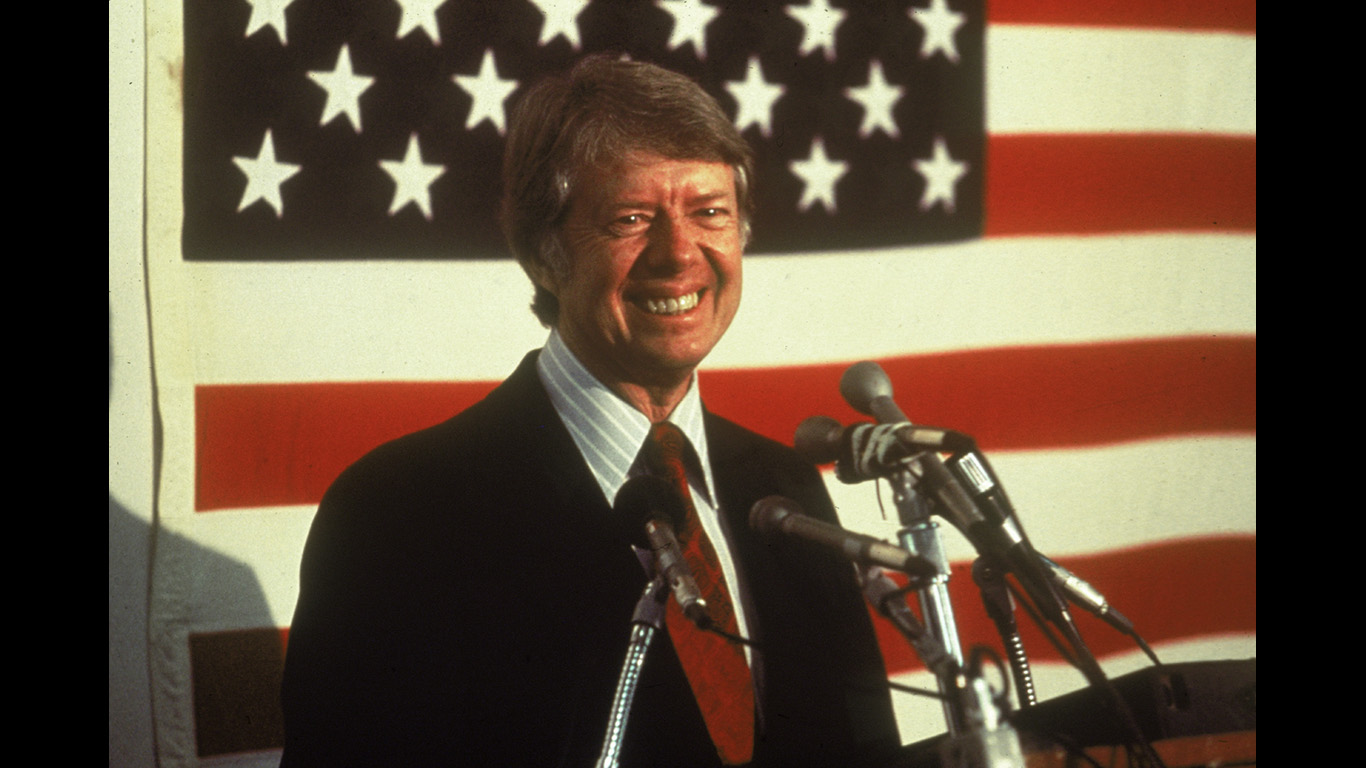
Jimmy Carter (1924-present)
> Term: 1977-1981
> Party affiliation: Democratic
> Notable occupation: Nuclear engineer, farmer
Jimmy Carter was admitted to the Naval Academy in Annapolis, Maryland, and joined the submarine service, the most dangerous branch of the Navy. Carter was at the forefront of the construction of the nuclear-powered submarine fleet and taught nuclear engineering. He eventually became governor of Georgia in 1970. With the nation still disillusioned from the Watergate, Carter, running as an outsider, won the 1976 election.
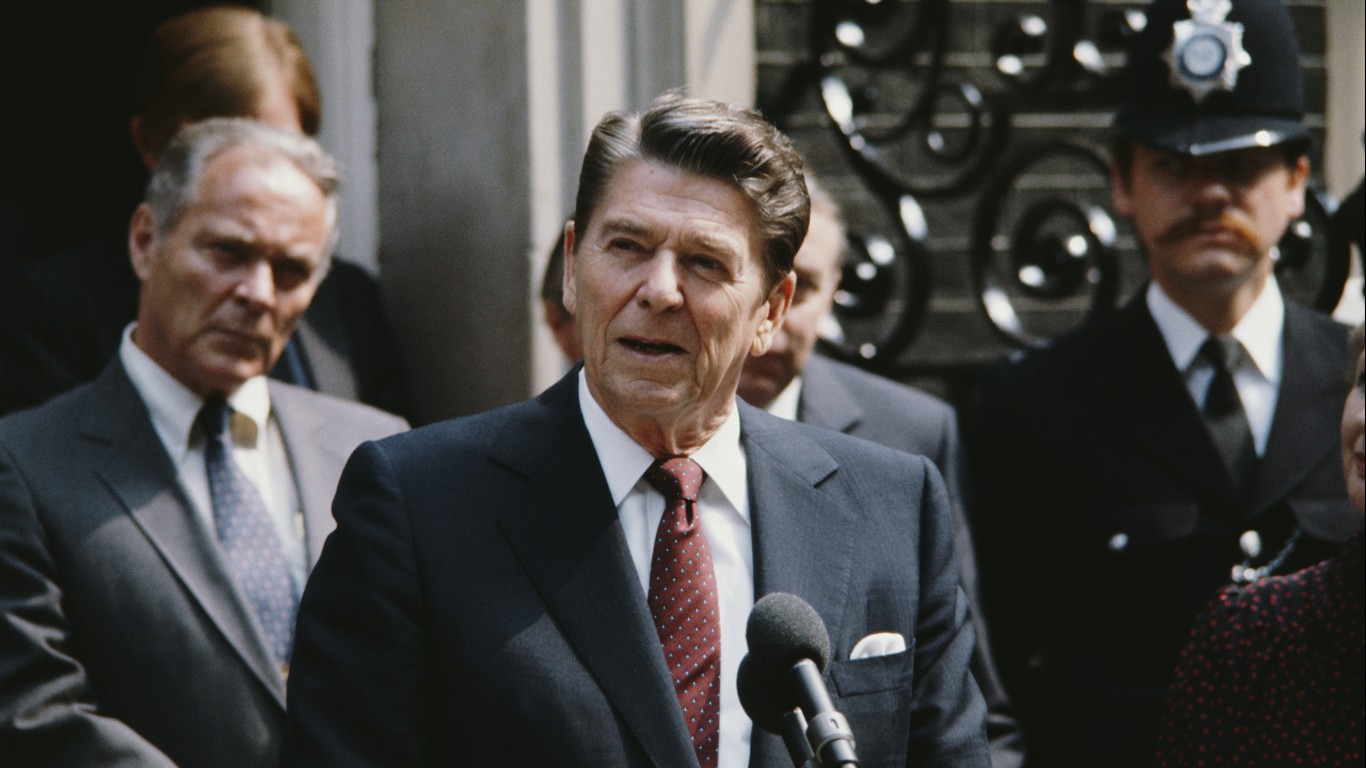
Ronald Reagan (1911-2004)
> Term: 1981-1989
> Party affiliation: Republican
> Notable occupation: Actor, governor
Ronald Reagan, first known to Americans as an actor in films in the 1940s and 1950s, became a virulent anti-communist in the 1950s as president of the Screen Actors Guild. That launched him on his political career. He became a spokesman for conservative causes. Reagan was elected governor of California in 1970, challenged incumbent Gerald Ford for the 1976 nomination, and defeated President Jimmy Carter in a landslide in 1980.
[in-text-ad-2]
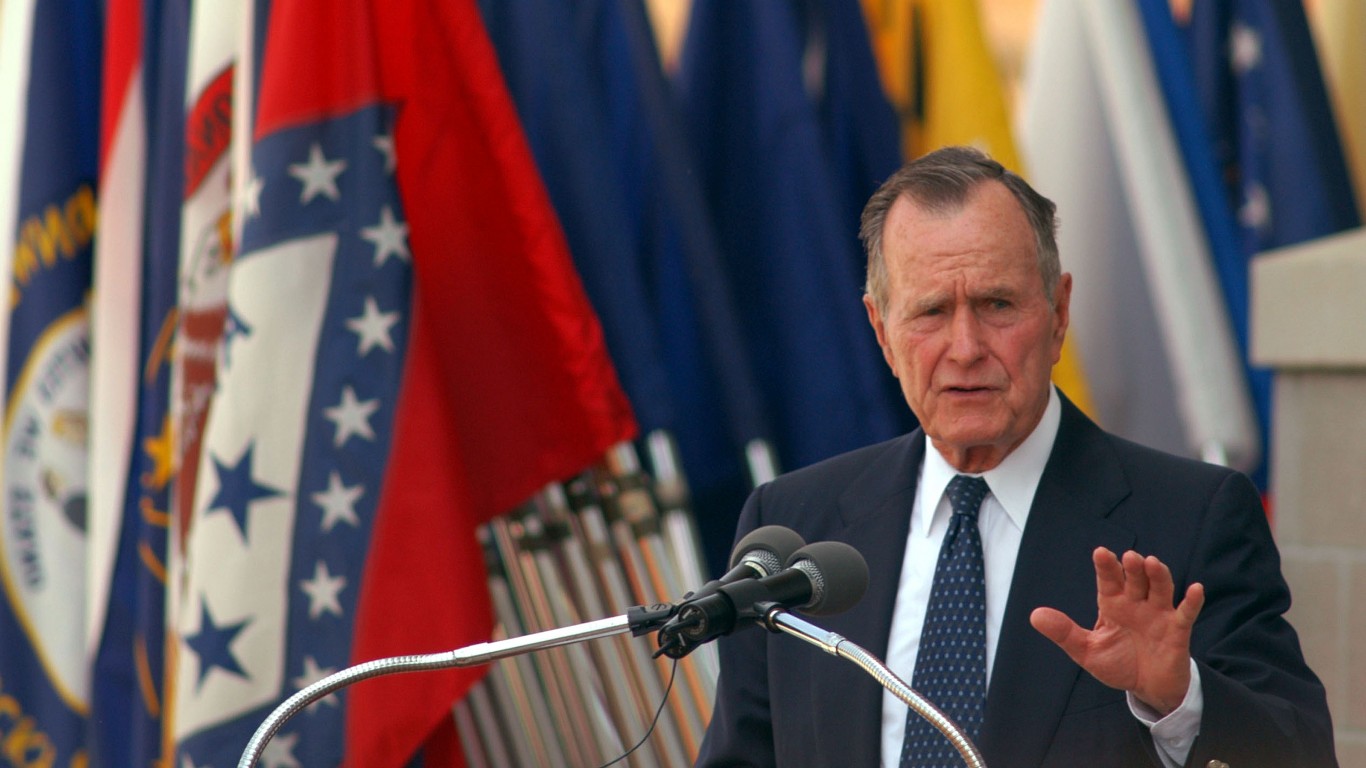
George H.W. Bush (1924-2018)
> Term: 1989-1993
> Party affiliation: Republican
> Notable occupation: Oil company executive, CIA director
George H.W. Bush’s life prepared him to be president. He was the youngest Navy fighter pilot in World War II. He got rich in the oil industry in Texas after the war, then shifted into public service. He won a seat in the House of Representatives. In 1970, President Richard Nixon named him ambassador to the United Nations. Bush fostered relationships in government in the 1970s, eventually becoming an envoy to China and director of the CIA.
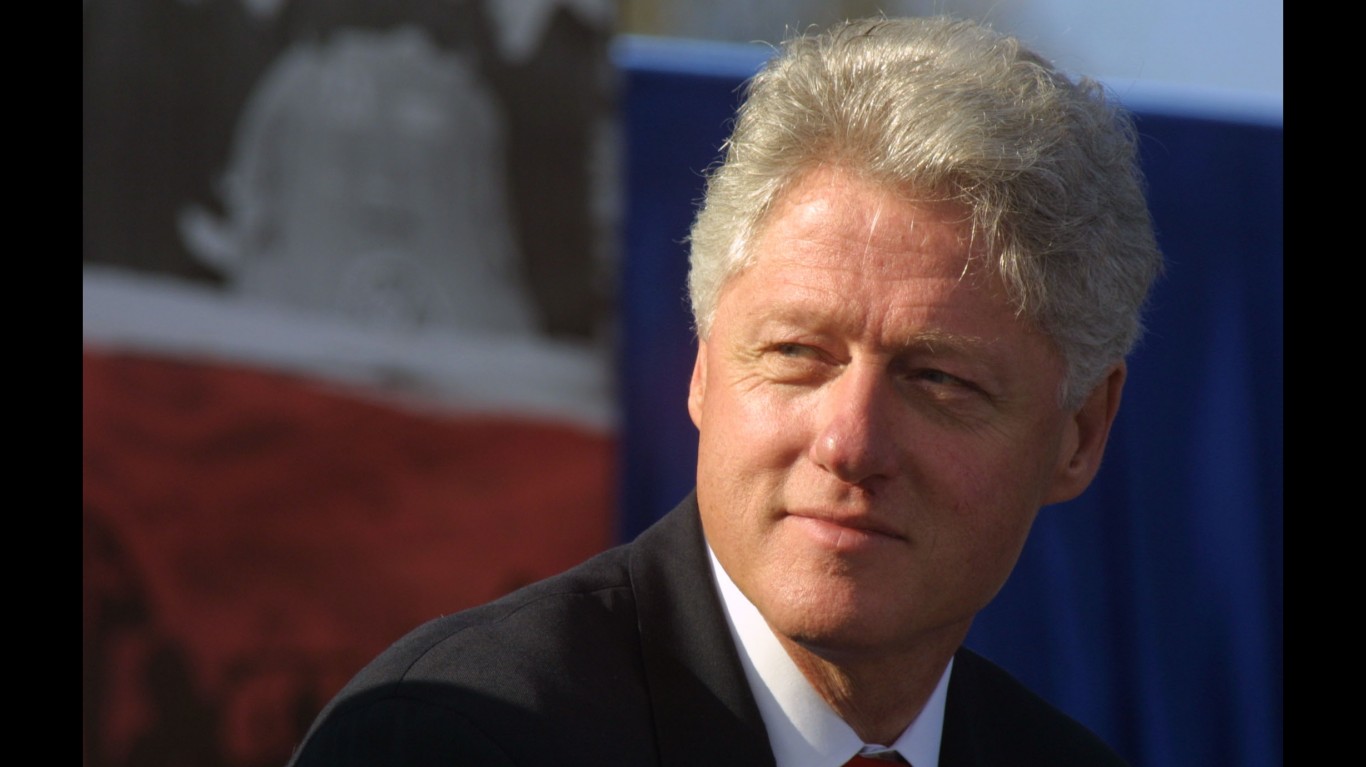
William J. Clinton (1946-present)
> Term: 1993-2001
> Party affiliation: Democratic
> Notable occupation: Governor
Bill Clinton showed a zeal for politics while he attended high school in Arkansas. He became a rising political star after losing a close race for a House seat in 1974. He became state attorney general two years later, then, in 1978, he was elected governor at age 32. His reform image and oratorical skills gained him national standing. Clinton also represented a generational shift in national politics. In a three-way race in 1992, Clinton defeated incumbent President Bush to become the 42nd president.
[in-text-ad]
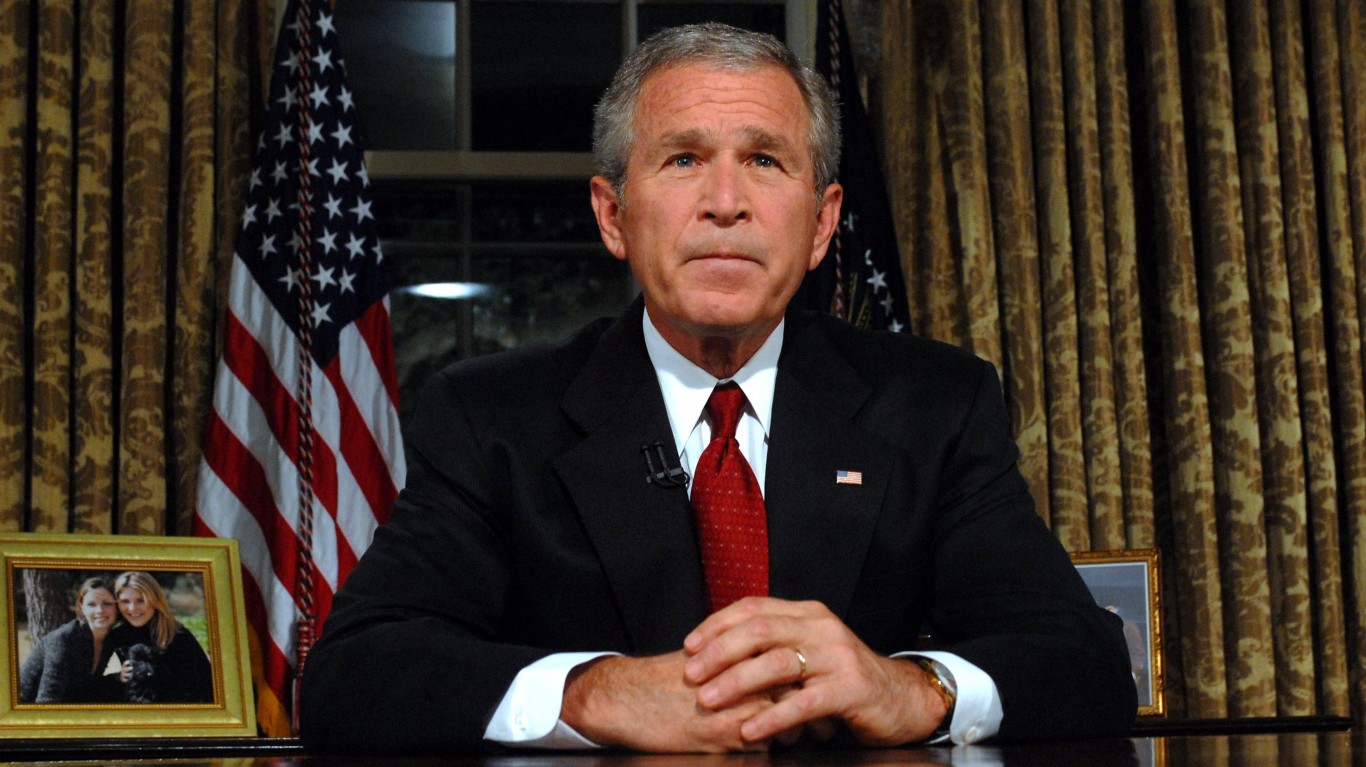
George W. Bush (1946-present)
> Term: 2001-2009
> Party affiliation: Republican
> Notable occupation: Businessman, governor
George W. Bush was born into a family dedicated to public service. His grandfather, Prescott, was a senator, and his father, George H.W., was the 41st president of the United States. After college at Yale, George W. got into the oil business like his father. He shifted into politics in 1978 and lost his first race for a seat in the House of Representatives. He would not run for office until his father left politics. He ran against incumbent Governor Ann Richards and upset her in 1993. As governor, Bush backed efforts to raise education levels for Texas children, and that gained him national attention that propelled him to the presidency.
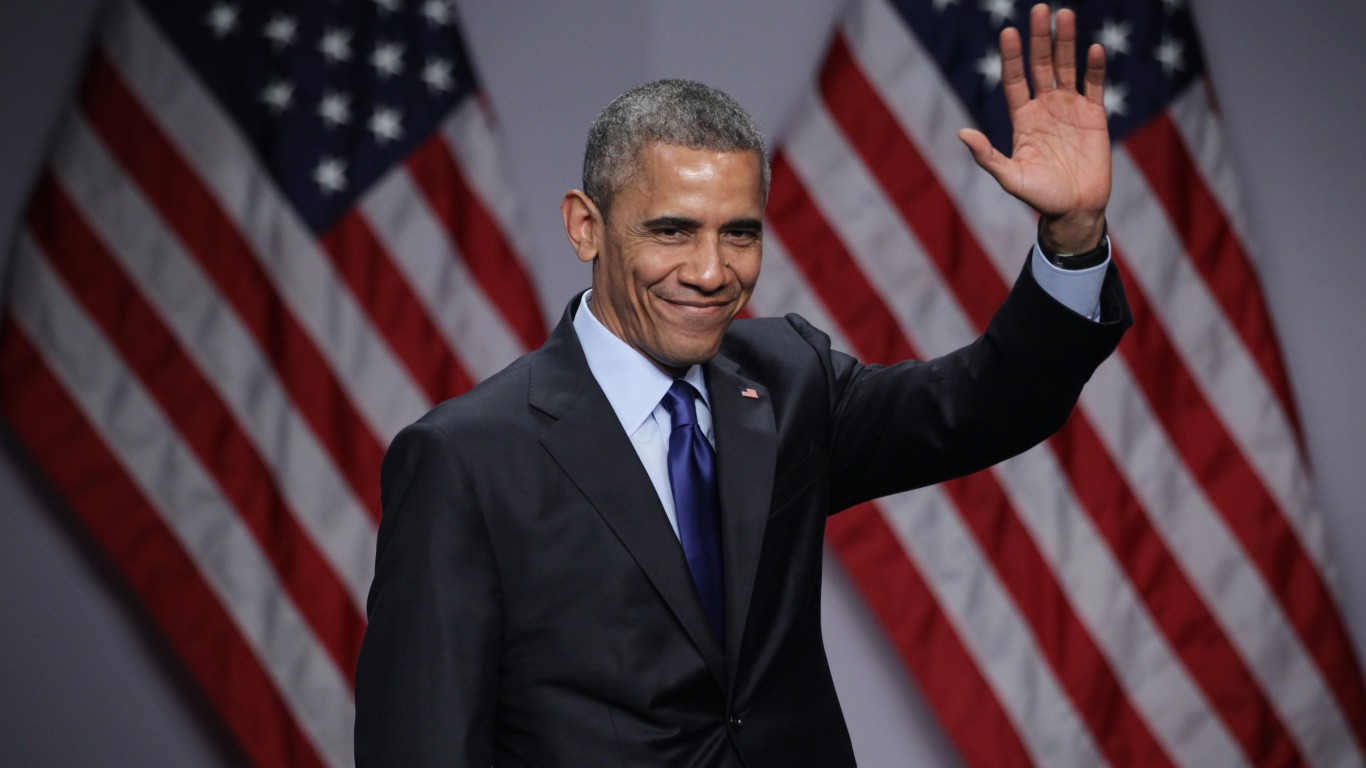
Barack Obama (1961-present)
> Term: 2009-2017
> Party affiliation: Democratic
> Notable occupation: Lawyer, senator
Barack Obama’s journey to the White House as the nation’s first African-American president was a remarkable one. He was the first African-American president of the Harvard Law Review. Obama began his political career in 1996, when he was elected Illinois state senator and was re-elected twice. He was elected as U.S. senator in 2004. Obama announced his campaign to run for president in late 2007, and he easily defeated John McCain in the 2008 election.
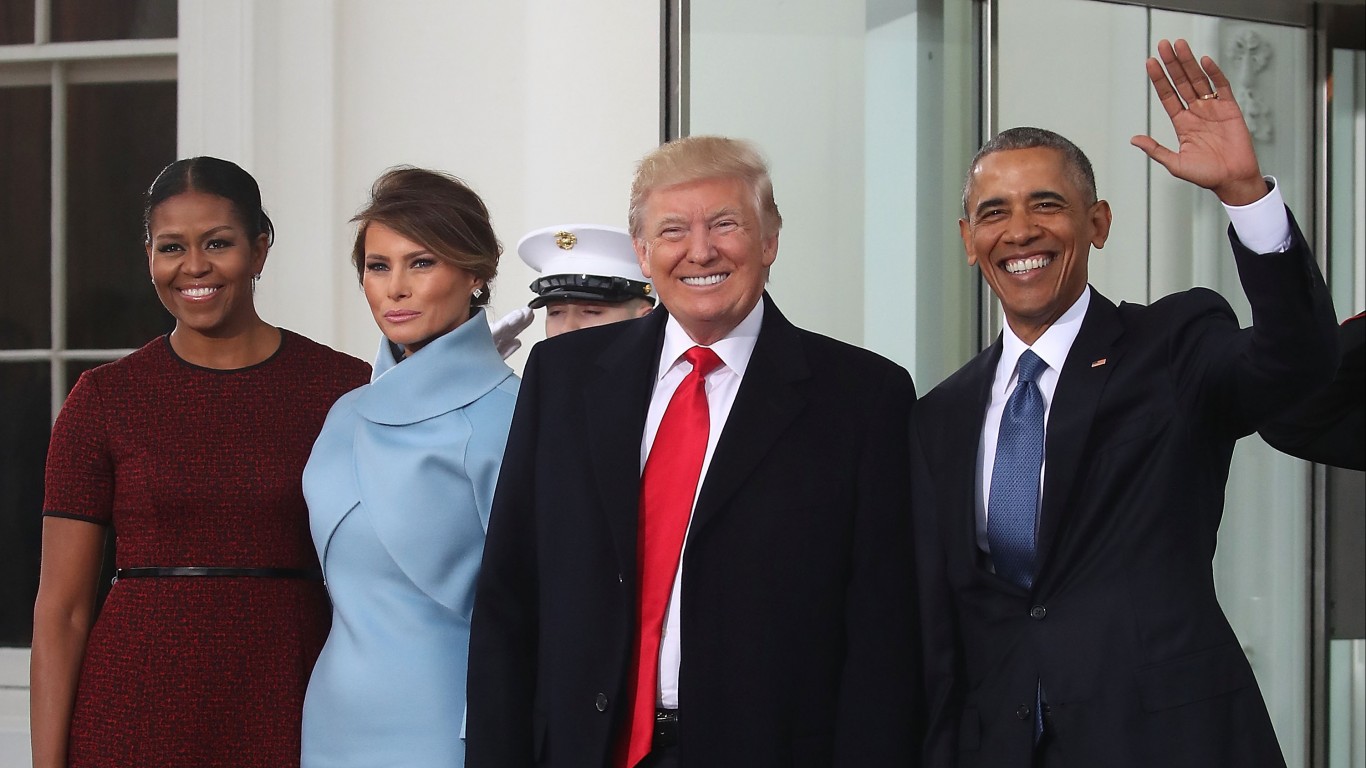
Donald J. Trump (1946-present)
> Term: 2017-present
> Party affiliation: Republican
> Notable occupation: Businessman
Donald J. Trump was raised in a family that expected high achievements. His father Fred was a real estate developer, and his sister Maryanne became a federal court judge. Trump boosted the family name through relentless salesmanship and courted the front pages of New York tabloids. After several half-hearted attempts at running for president, Trump leveraged his real estate notoriety and fame as a reality television show host to mount a presidential campaign in 2016 that overcame a host of Republican challengers and upset Hillary Clinton in the election.
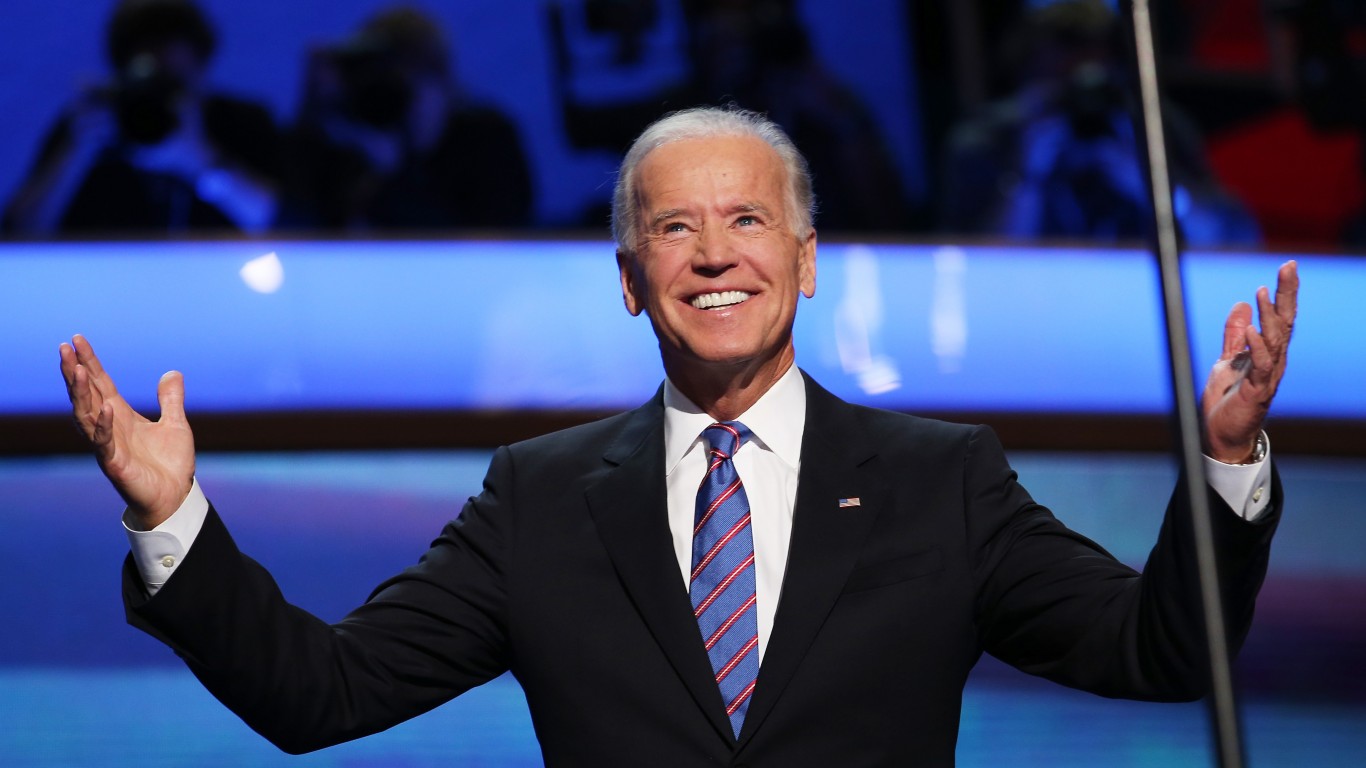
Joe Biden (1942-present)
> Term: To be inaugurated on Jan. 20, 2021
> Party affiliation: Democrat
> Notable occupation: Senator, vice president
President-elect Joe Biden was a Democratic candidate for president twice before — in 1988 and again in 2008. He won the party’s nomination — and ultimately the presidential election — on his third try, in 2020. A senator from Delaware between 1973 and 2009, Biden is the longest-serving senator from the First State. In 2009, he was sworn in as vice president under President Barack Obama and remained in office for two terms. Biden considered running for president in 2016 but decided against it because he was behind Hillary Clinton and Bernie Sanders in the polls.
It’s Your Money, Your Future—Own It (sponsor)
Retirement can be daunting, but it doesn’t need to be.
Imagine having an expert in your corner to help you with your financial goals. Someone to help you determine if you’re ahead, behind, or right on track. With SmartAsset, that’s not just a dream—it’s reality. This free tool connects you with pre-screened financial advisors who work in your best interests. It’s quick, it’s easy, so take the leap today and start planning smarter!
Don’t waste another minute; get started right here and help your retirement dreams become a retirement reality.
Thank you for reading! Have some feedback for us?
Contact the 24/7 Wall St. editorial team.
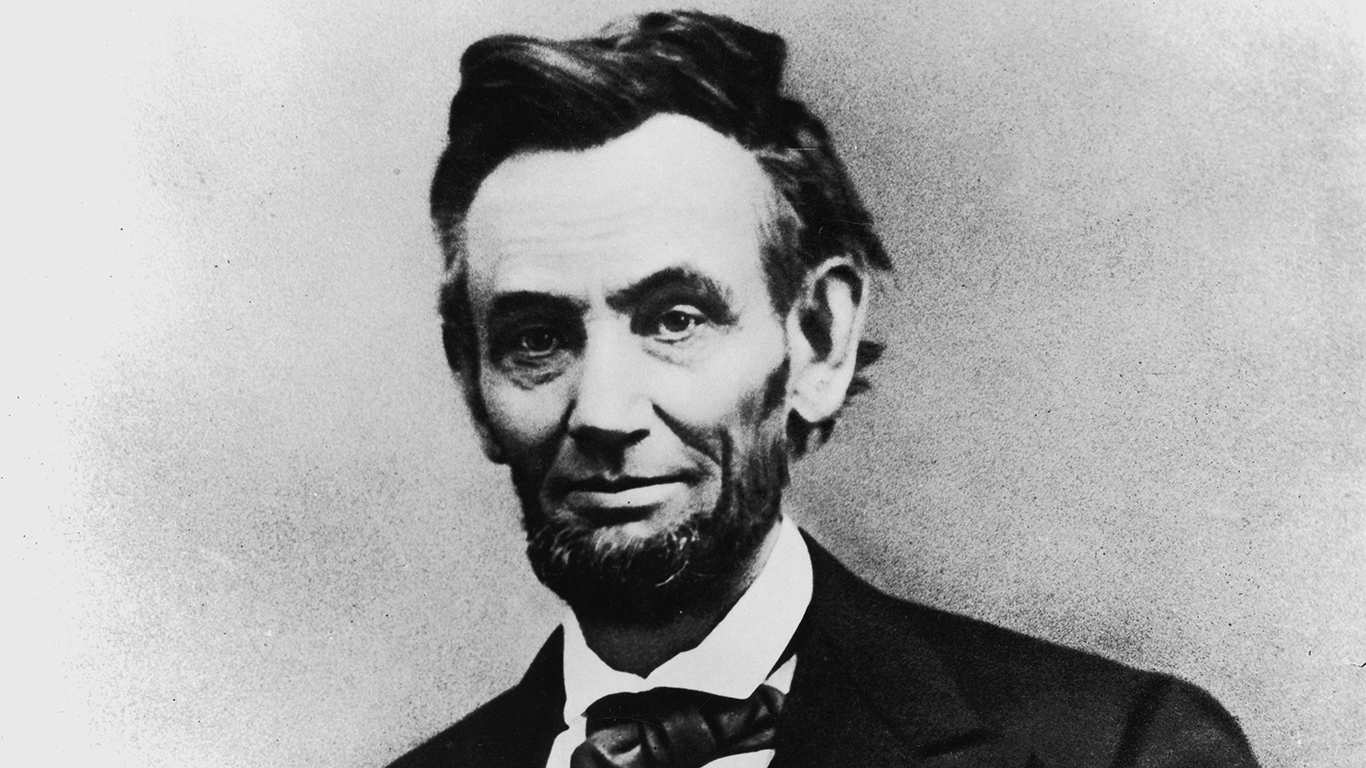 24/7 Wall St.
24/7 Wall St.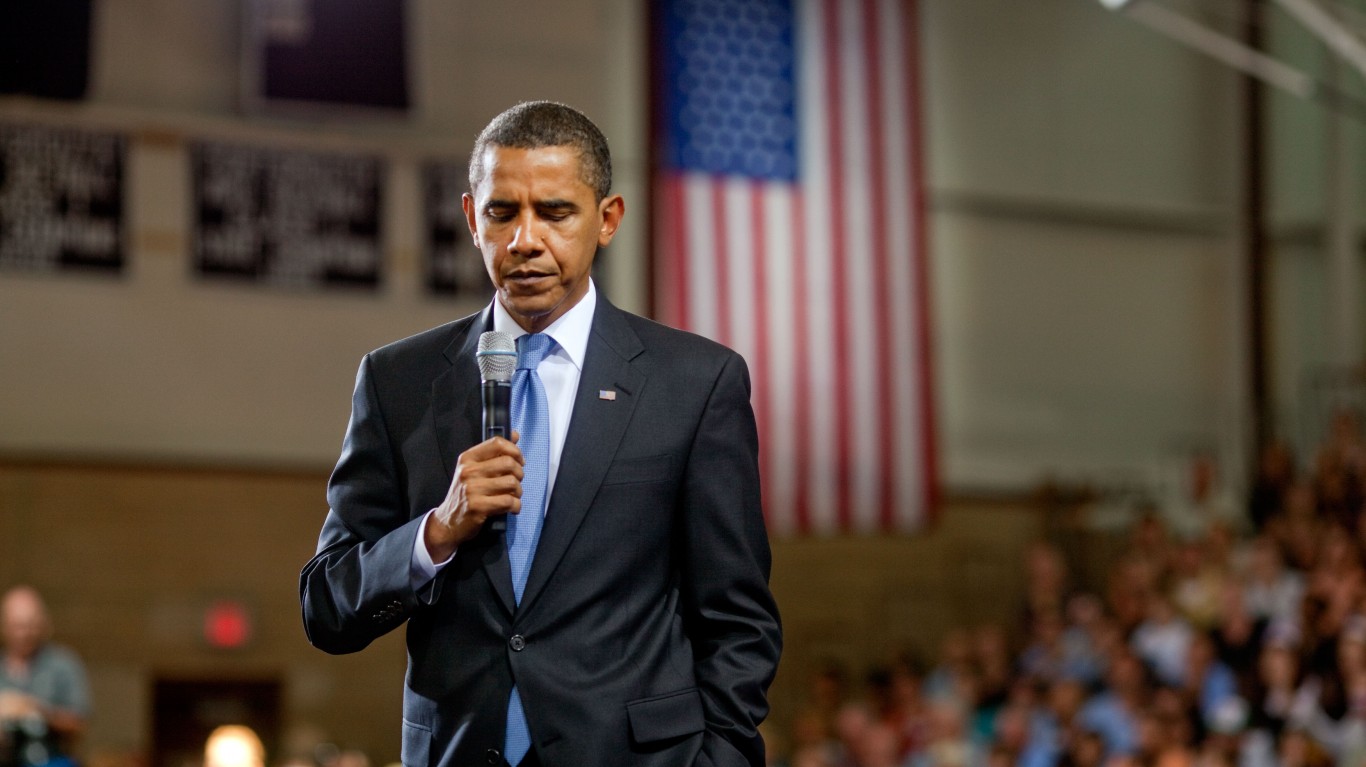 24/7 Wall St.
24/7 Wall St.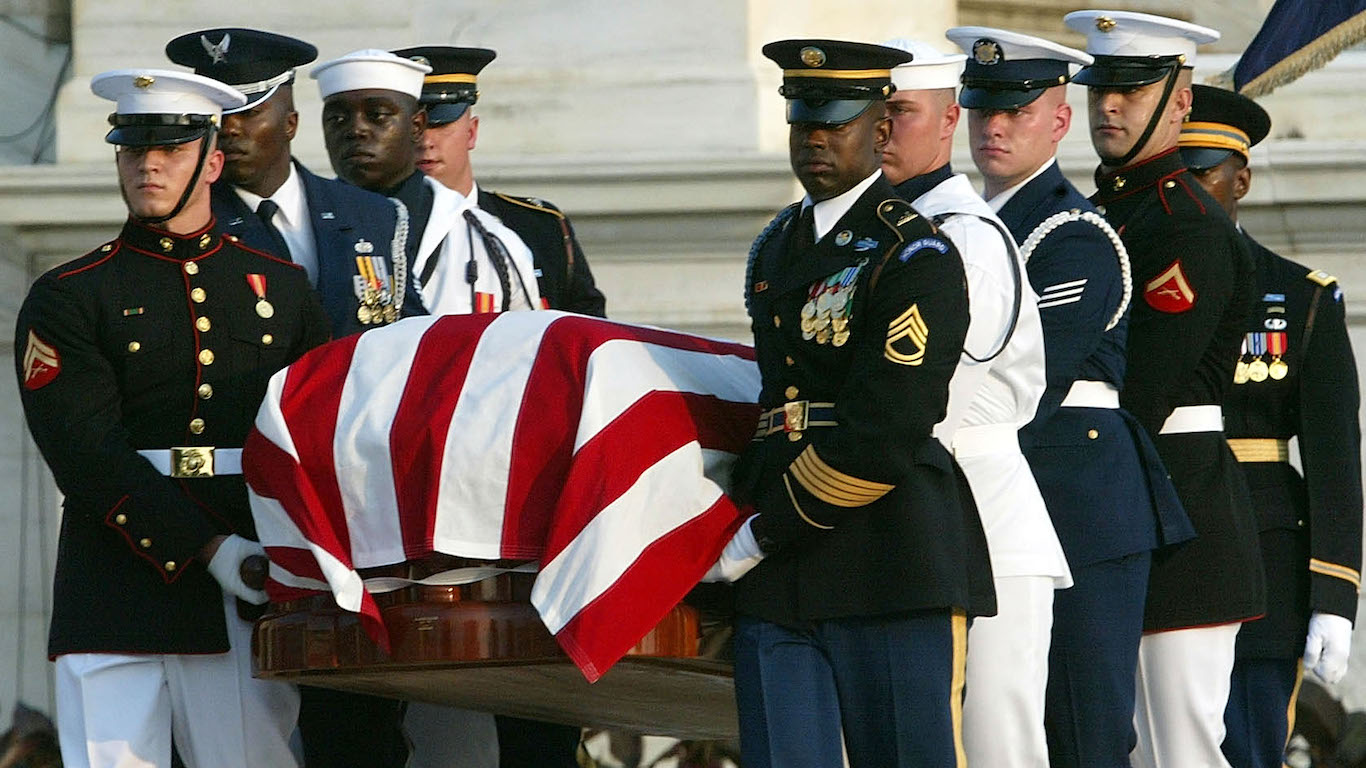 24/7 Wall St.
24/7 Wall St.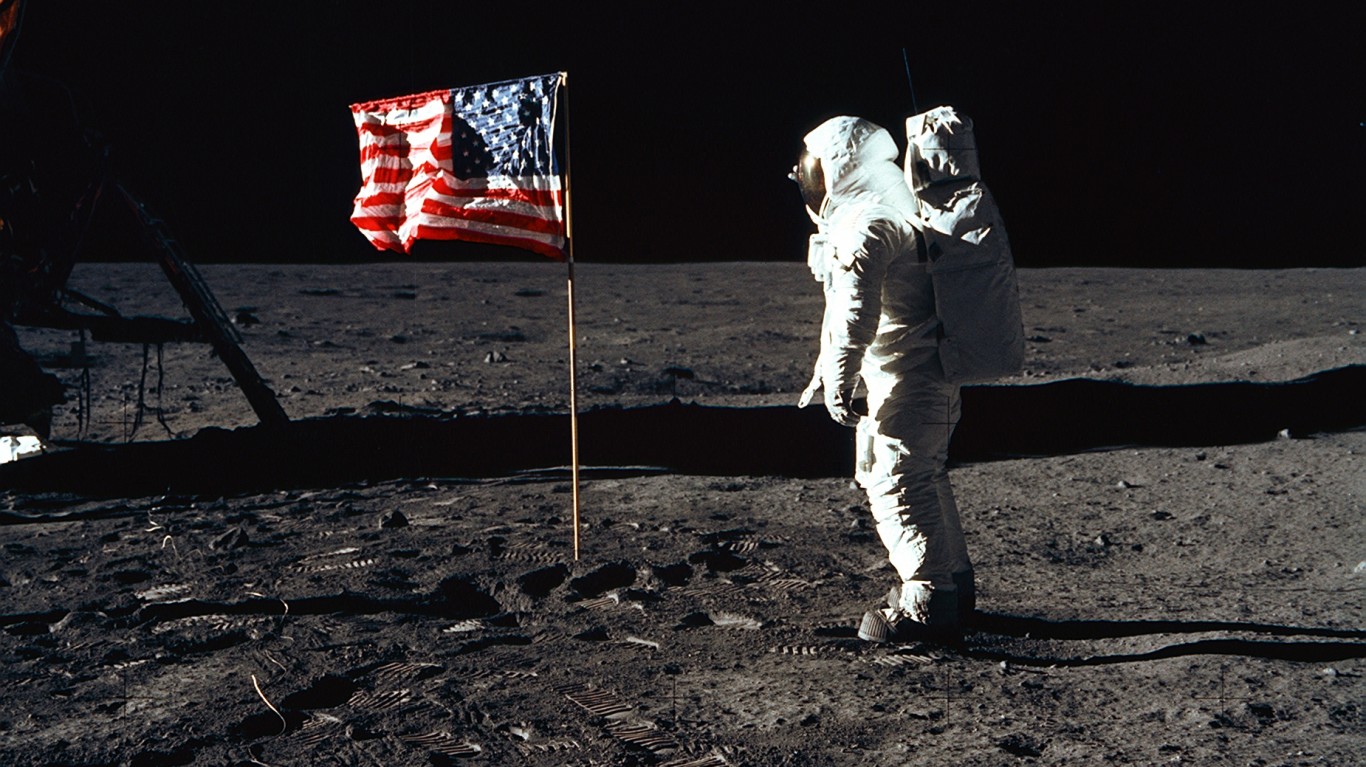 24/7 Wall St.
24/7 Wall St.